Why Heritage Tourism is Important in the Philippines?
Heritage tourism is crucial in the Philippines for economic growth, job creation, cultural preservation, educational enrichment, and sustainable community development.

Table of Contents

Significance of Cultural Heritage
The cultural heritage of the Philippines holds immense significance not just for its aesthetic and historical value, but also for its role in shaping the nation’s identity. Here are some of the key aspects:
Unique Filipino Traditions
Filipino traditions are a blend of indigenous, Spanish, and American influences, creating a rich tapestry that is uniquely Filipino. Examples include:
- Festivals : Festivals like Sinulog and Ati-Atihan are world-renowned, attracting tourists from all over the globe. These festivals showcase intricate dances, vibrant costumes, and a communal spirit that embodies Filipino culture.
- Cuisine : Filipino food like Adobo and Sinigang are more than just meals. They are cultural experiences that speak volumes about the regional diversity and historical influences that shaped the Philippines.
- Traditional Crafts : Whether it’s weaving patterns from the Ifugao region or the art of “Balangay” boat building, Filipino crafts tell a story of ingenuity and craftsmanship passed down through generations.
Indigenous Practices and Heritage Sites
The Philippines is home to numerous indigenous communities that contribute significantly to the nation’s rich cultural heritage.
- Tattooing Practices : The traditional tattooing methods of the Kalinga community are a form of artistry and a rite of passage, shedding light on societal values and beliefs.
- Heritage Sites : Places like the Rice Terraces of the Philippine Cordilleras are not just breathtaking vistas but also living museums. They provide insight into ancient agricultural practices and community living.
- Spiritual Beliefs : Indigenous spiritual practices, like the Anito worship, offer an alternative lens through which to understand Filipino spirituality, beyond the predominant Catholicism.
Economic Importance
The economic importance of heritage tourism in the Philippines cannot be overstated. Here’s why:
Contribution to GDP
- Tourism Revenue : Heritage tourism is a significant contributor to the nation’s Gross Domestic Product (GDP). Cities like Vigan and heritage sites like Corregidor Island generate substantial income through entry fees, guided tours, and local businesses catering to tourists.
- Global Standing : Heritage sites often make it to international rankings and travel awards, bringing prestige and subsequent financial benefits to the Philippines.
- Secondary Businesses : The tourism influx also spurs other sectors like hospitality, food and beverage, and retail, leading to a multiplier effect on the local economy.
Employment Generation
- Direct Employment : Heritage tourism creates job opportunities for local guides, artisans, and service staff in hotels and restaurants.
- Indirect Employment : Tourism drives demand for local produce, crafts, and services, thus creating jobs in related industries.
Educational Value
Heritage tourism serves as an educational tool for both locals and tourists. Here’s how:
Awareness and Understanding of Cultural History
- Living History : Visiting heritage sites like Intramuros offers a living history lesson, allowing people to experience architectural, social, and political facets of Filipino history firsthand.
- Information Dissemination : Information boards, guided tours, and interactive exhibits at heritage sites provide detailed insights into Filipino culture and history.
Role in Formal and Informal Education
- School Trips : Educational institutions often arrange visits to heritage sites as part of their curriculum to supplement classroom learning.
- Community Workshops : Local governments and non-profit organizations often conduct workshops and educational programs focused on traditional crafts, dances, and other cultural aspects, offering both formal and informal educational benefits.
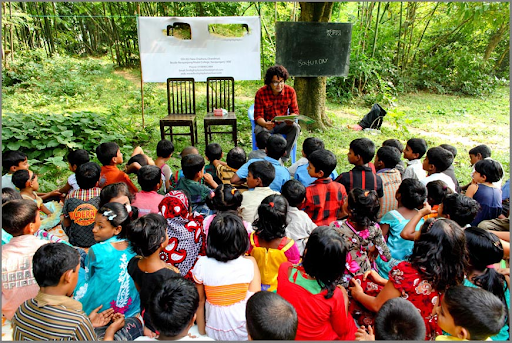
Social Implications
The social benefits of heritage tourism in the Philippines extend beyond mere visitor enjoyment. Here are the critical areas where this form of tourism makes a difference:
Community Building
- Local Engagement : Heritage tourism often involves the local community in planning and operation, ensuring that they feel ownership and pride in their heritage.
- Shared Stories : Local communities get an opportunity to share their stories, history, and traditions with the world, fostering a sense of belonging and identity.
- International Connections : As tourists from around the globe visit these sites, it promotes cross-cultural understanding and friendships, enriching the social fabric of the community.
Preservation of Traditions
- Financial Incentives : Tourism revenue can be invested back into the community for the maintenance of cultural sites and traditions.
- Documenting Heritage : The increased focus on heritage sites often leads to better documentation and research into local traditions, languages, and crafts, ensuring their preservation for future generations.
- Revival of Arts : As tourists show interest, traditional crafts and practices that may have been fading away get new life and attention.
Environmental Considerations
The environmental impact of heritage tourism is a subject of concern but also offers several avenues for sustainable development.
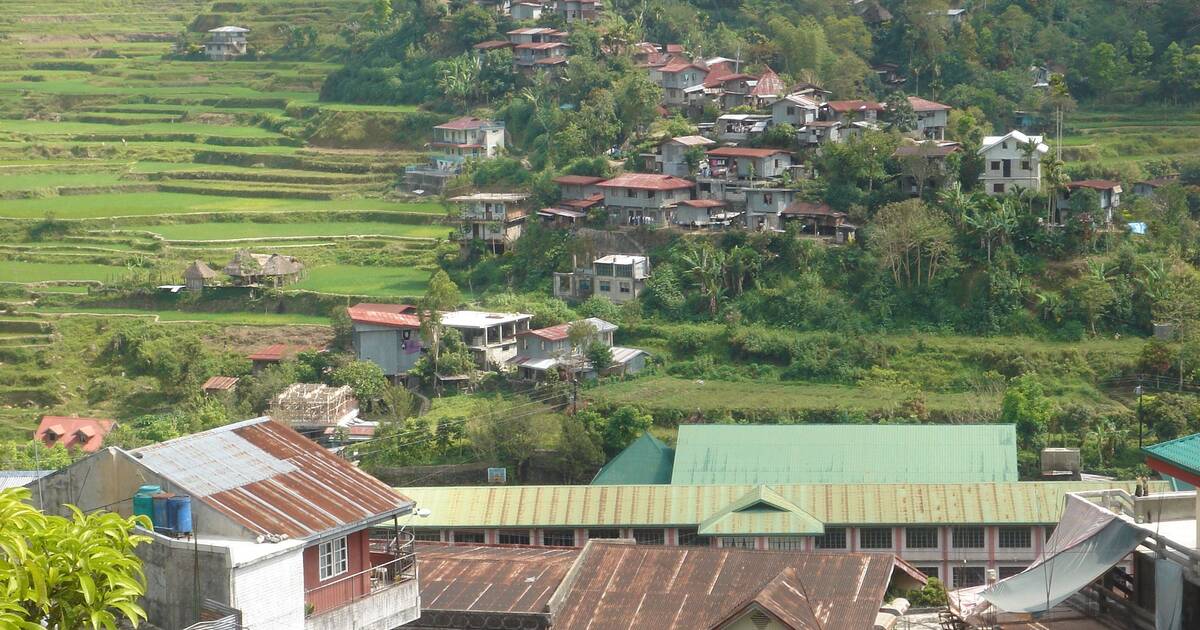
Eco-friendly Heritage Tourism
- Sustainable Practices : Many heritage sites in the Philippines are adopting eco-friendly measures like waste management, energy-efficient infrastructures, and guided tours that minimize environmental impact.
- Education : These eco-friendly initiatives are often accompanied by educational materials that inform visitors about the importance of environmental conservation.
Challenges and Solutions
- Footprint Concerns : Popular sites may suffer from overtourism, leading to degradation. Controlled access and visitation schedules can mitigate this.
- Adaptive Reuse : Instead of constructing new buildings and structures, adaptive reuse of historical buildings for modern purposes can be both environmentally responsible and culturally enriching.
Related Posts
Is tourism high in the philippines, what is the most visited place in the philippines, what kind of tourism is in the philippines, why is philippines rich in tourism.

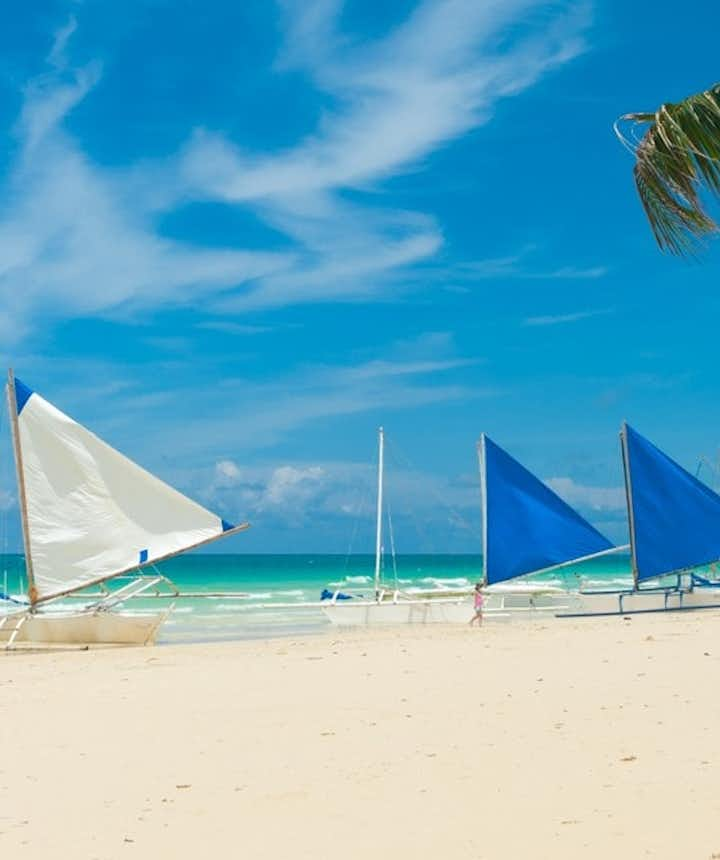
Where to Go in the Philippines 2024 | Best Tourist Spots

15. Calle Crisologo, Vigan
14. nacpan beach, el nido, 13. tubbataha reef, palawan, 12. mayon volcano, albay, bicol, 11. intramuros and fort santiago, manila, 10. taal volcano and lake, tagaytay, and batangas, 9. kawasan falls, cebu, 8. kayangan lake, coron, palawan, 7. rizal park, manila, 6. banaue rice terraces, ifugao.
- 5. Cebu’s Beaches and Diving Spots
4. Cloud 9, Siargao
3. puerto princesa underground river, palawan, 2. chocolate hills, bohol, 1. white beach, boracay.
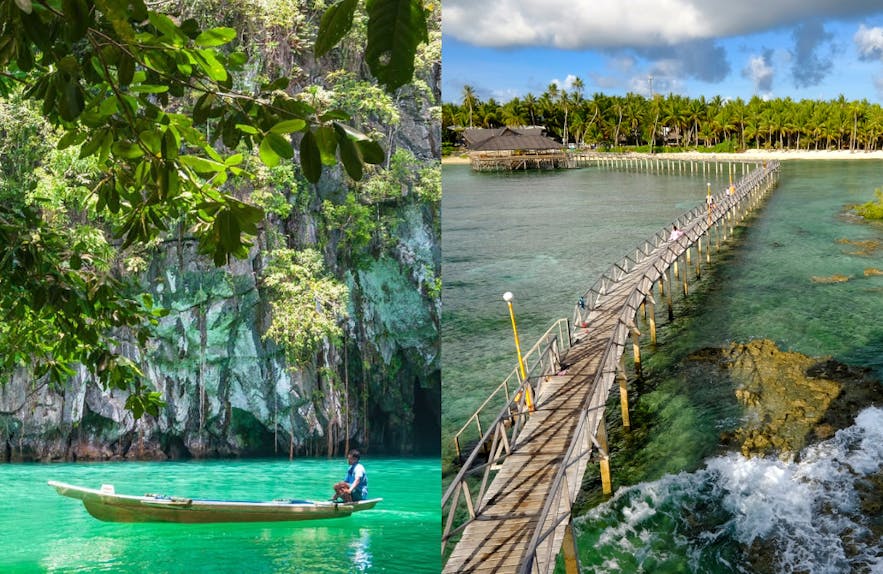
If tropical islands, beautiful landscapes, and unending adventures are on your bucket list for a holiday trip, then you have found a gem of a destination with the Philippines.
The Philippines has over 7,000 islands and is the perfect getaway to experience a mix of nature, culture, and fun. The geographical features of the Philippines ensure that there are natural attractions wherever you go. Whether you're headed to Luzon tourist spots , Visayas tourist spots , or Mindanao tourist spots , expect beautiful sights, unique attractions, friendly locals, and memorable experiences.
The best beaches in the Philippines , idyllic islands in turquoise waters, the world’s most perfect cone volcano , the second smallest primate, world-class surfing spots, and centuries-old Spanish fortresses—these are but some of the attractions awaiting you on your Philippine holiday.
- Explore a wide selection of island hopping in the Philippines and other Philippine tours for your trip
- Read our guide on getting around the Philippines
- See the requirements to rent a car in the Philippines
With all the destinations and experiences the Philippines offers, creating an itinerary may be daunting, especially for first-time visitors.
To help out, we have listed down the best places to visit in the Philippines.
See our popular Best Philippines Itinerary Tour Packages
5-day nature & islands adventure package to puerto princesa and el nido palawan, 4-day fascinating culture & nature tour package to cebu & bohol with accommodations & transfers, scenic 1-week beaches & nature vacation package to cebu, puerto princesa & el nido palawan.
Read on to find out which top tourist destinations in the Philippines you should not miss on this trip of a lifetime!
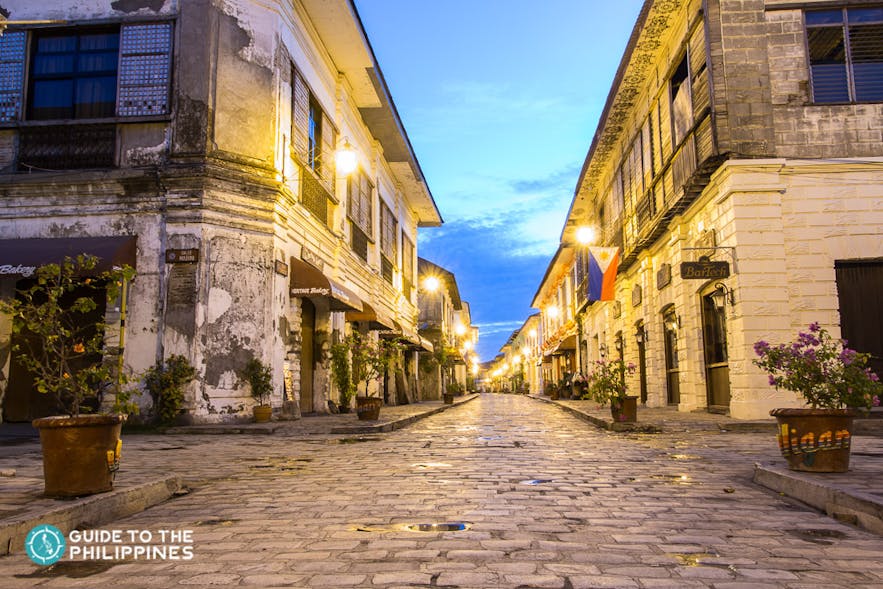
Travel back in time as you stroll along the streets of Calle Crisologo in Vigan as part of your Ilocos itinerary . This 16th-century town, a UNESCO World Heritage Site and a popular tourist spot in the Philippines, quietly boasts old-world charm and Spanish colonial architecture and is the top attraction in Vigan, Ilocos tours and one of the top historical landmarks in the Philippines .
The town famous for its Calle Crisologo tour has successfully managed to preserve the historic district where you can still find calesas (horse-drawn carriages). Sample the famous and delicious Ilocos empanada and walk along cobbled streets lined with souvenir shops selling pottery and Abel Iloko weaves. These are among the many things to see and do when in Vigan .
- Check out our list of the best hotels in Vigan and the top Vigan tours
The best time to visit for Calle Crisologo tours is during the first week of May when the town celebrates the Vigan Festival of the Arts, one of the festivals in the Philippines .
See our popular Vigan Tours and Activities
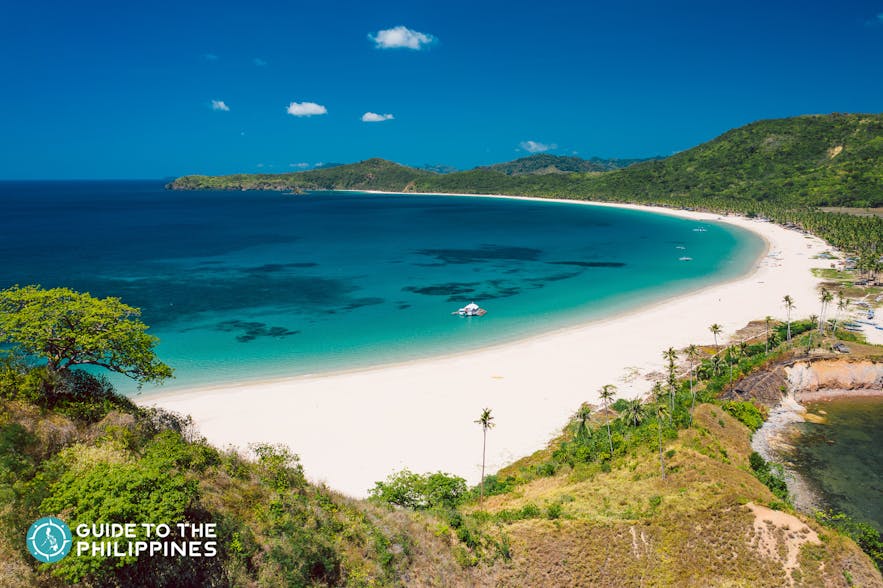
El Nido in Palawan is most famous for its paradise-like islands and lagoons, but a 45-minute ride from its main town takes you to another idyllic destination: Nacpan Beach.
Island hopping escapades in El Nido , including a visit to El Nido Big Lagoon and other top Palawan beaches should not be missed. But after a jam-packed day of visiting coves, white-sand beaches in El Nido , limestone cliffs, and other El Nido Palawan tourist spots , a trip to Nacpan Beach is highly recommended.
The main attraction is its 4-kilometer shoreline with golden sand and endless palm trees lining up, perfect for just bumming around. Calitang Beach sits on the other side, and the two beaches form what is now popularly known as the Twin Beaches of El Nido.
- Browse our list of the best hotels and resorts in El Nido and El Nido tour packages
Visitors are not advised to swim far away from shore in Nacpan as currents tend to become strong and rough with little warning.
If you're looking for budget-friendly accommodations in El Nido, check out our collection of El Nido hostels .
See our popular El Nido Tours and Activities
Private el nido lio airport transfer to/from any hotel in el nido town palawan, palawan el nido shared island hopping tour a with lunch & transfers | secret lagoon, shimizu island, private puerto princesa airport to or from el nido town transfer service.
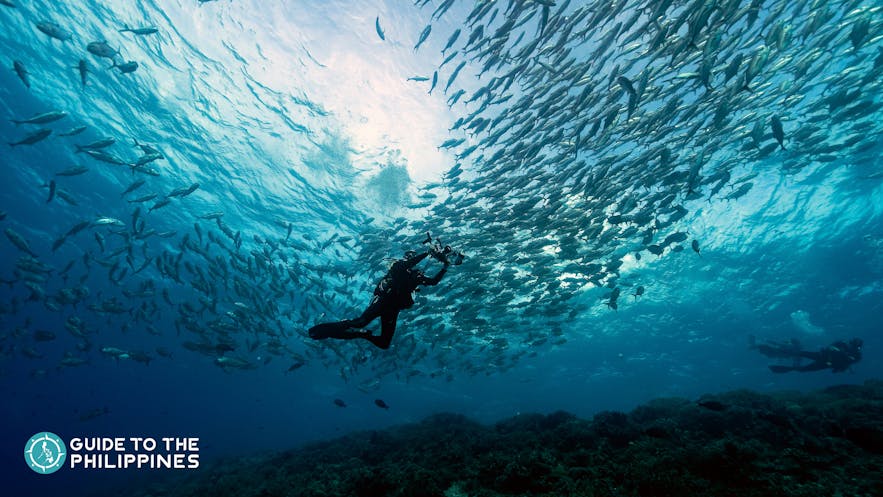
Tubbataha Reef is regarded as one of the top diving spots in the Philippines , and, perhaps, the world. Located at the heart of the Sulu Sea, it is considered a center of marine biodiversity and a haven not just for divers but marine conservationists as well. The only way to get to this marine sanctuary is through a liveaboard vessel from Puerto Princesa, Palawan.
The access may be challenging, but it is probably what is keeping the Tubbataha Reefs Natural Park teeming with some of the most unique underwater life in the world. It is listed as a UNESCO World Heritage Site and was nominated as part of the “New Seven Wonders of the Natural World.”
Among the species that call Tubbataha home are reef sharks, manta rays, Napoleon wrasses, and more than half of all the world's coral species. One of its islets is also a breeding site for birds and marine turtles.
Tubbataha reef diving requires months or even years of planning, but experiencing the staggering wealth underneath is more than worth it.
See our popular Philippine Scuba Diving Packages & Courses
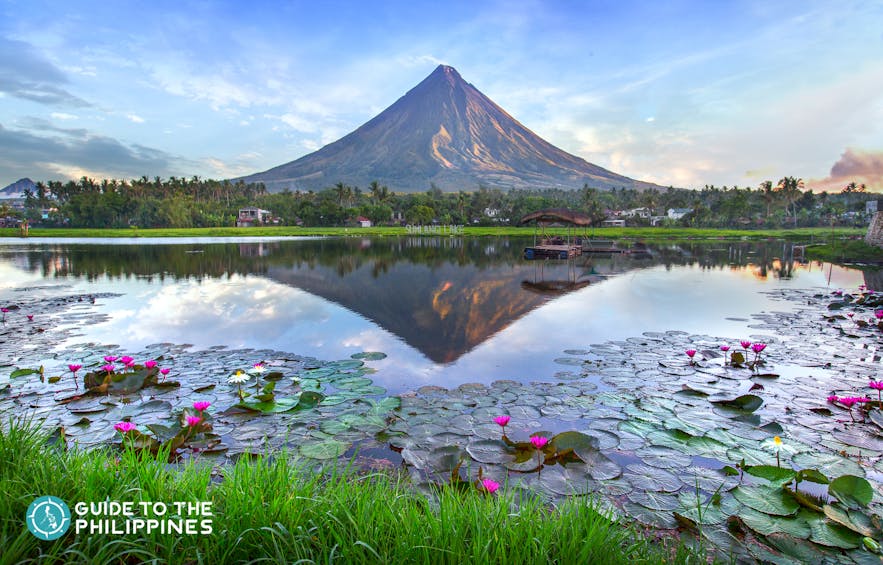
As soon as your flight lands at the airport in Bicol International Airport of Albay province, the world’s most perfect volcanic cone and the most active volcano in the Philippines greets you with its majesty. Mayon Volcano is one of the most beautiful places to visit in the Philippines and is a top attraction in any Bicol tour .
Its sheer beauty (the name Mayon comes from the Bicolano word ‘magayon,’ which means beautiful) hides a violent core, with past eruptions that flattened several towns.
- Read our article on travel insurance in the Philippines
One of the top natural landmarks in the Philippines and one of the most-visited tourist spots in Albay , it is already a wonderful experience seeing the volcano from afar. But if you are an adrenaline junkie, you can soak up all its beauty while gliding through a zipline in Lignon Hill or going on a Mayon Volcano tour via a Mayon ATV ride in Bicol. Visit the Cagsawa Ruins for another unique and historic viewing point of the Mayon Volcano.
As a bonus, from Legazpi, you can take a side trip to Donsol, where you can enjoy swimming with whale sharks in their natural habitat.
See our popular Mayon Volcano Tours
Mayon volcano legazpi atv ride black lava wall trail with guide & transfers, albay best views of mayon sightseeing & culture tour with snacks & transfers from legazpi, mayon volcano legazpi atv ride with 3-hour hike in farmer's trail with lunch, guide & transfers.

Take a stroll through history lane within the walled city of Intramuros in Manila , one of the top landmarks in the Philippines. This 64-hectare Spanish fortress was erected by Miguel Lopez de Legazpi and was destroyed by the end of World War II.
- Book Manila hotels or serviced apartments in Metro Manila for your trip
- Read our article on the best buffets in Manila
Another Intramuros attraction is Fort Santiago, a citadel that served as headquarters for armies and foreign powers. It is a historically significant site where the national hero, Dr. Jose Rizal, was imprisoned before his execution.
You can learn more about its history when you go on trips to Fort Santiago . You can also go on a guided bamboo bike tour or ride a horse-drawn carriage to explore Intramuros' historic walls.
Cap off your trip with a meal or drink at some of the finest Filipino restaurants inside Intramuros. One popular establishment is Barbara’s, where you can enjoy traditional Filipino cuisine buffet-style while being treated to a cultural show.
See our popular Intramuros Tours
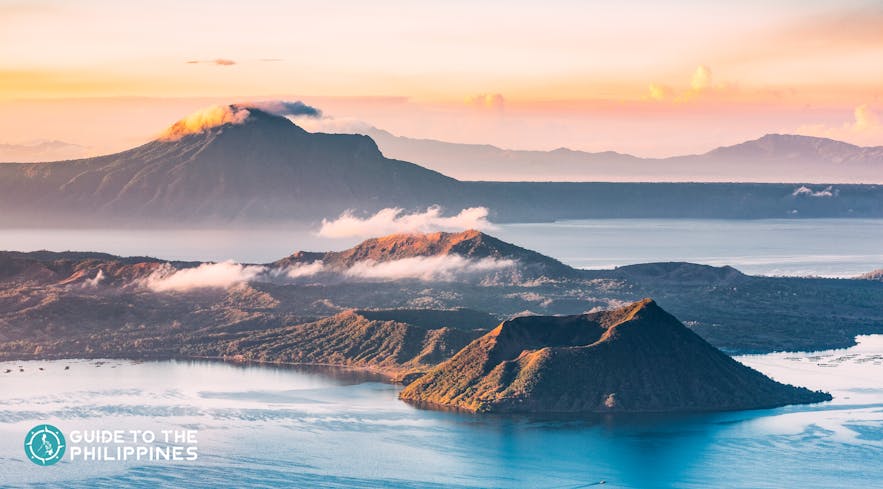
Locals and foreign visitors from Manila often take a quick escape from the megacity and make their way south to Tagaytay , a relaxing town famous for its cool weather, magnificent views, and many tourist spots . It's popular for being one of the best kid-friendly places near Manila .
The best Tagaytay hotels have a view that faces Taal Volcano, one of the world’s smallest active volcanoes. The volcano sits on an island within a lake within an island.
Since hikes to the crater are no longer allowed, head to Tagaytay restaurants , Tagaytay cafes , or Tagaytay hotels with a view of Taal. While in Tagaytay and Batangas, heat up your trip with a delectable bowl of Bulalo, a clear broth with beef shanks, bone marrow, and corn.
- Check out our list of the best Tagaytay hotels with Taal Volcano views
- Experience a Tagaytay Taal Lake boat ride
- Book a Tagaytay City tour from Manila
- Check out our list of the best farm resorts near Manila , best beach resorts near Manila , and the top affordable resorts near Manila
- Browse our list of resorts in Batangas
See our popular Tagaytay Tours and Activities
Tagaytay palace in the sky taal view & farms shared day tour with lunch & transfers from manila, tagaytay city sightseeing shared day tour with transfers from manila | picnic grove, twin lakes, coffee farm tour at amadeo cavite near manila & tagaytay with live brewing & tasting sampler.
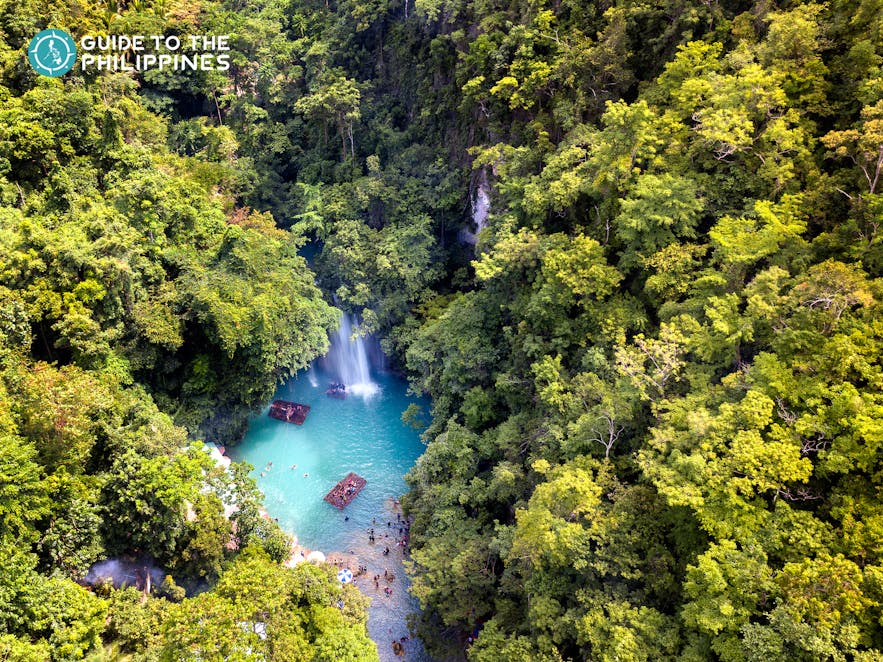
If you like jumping into or swimming in cool cascading waters, Kawasan Falls in Cebu hits the sweet spot. It is a multi-layered waterfall in the town of Badian and is best known for its turquoise waters.
With a height of 40 meters, the first cascade is where most visitors stay, swim, and enjoy a natural water massage on board a bamboo raft. A 10-minute trek takes you up to the quieter second cascade.
- Find and book the best Cebu hotels
- Check out other top Cebu tours you can try
Kawasan Falls is also the endpoint of the popular adventure activity, Kawasan Falls canyoneering . This tour starts in Kanlaob River in the town of Alegria. You'll make your way to Kawasan, swimming along streams, rappelling through natural rock walls, and finally jumping off mini-waterfalls.
Nearby is the town of Moalboal , famous for its sardine run experience , where you swim with millions of sardines just offshore.
See our popular Kawasan Falls Tours
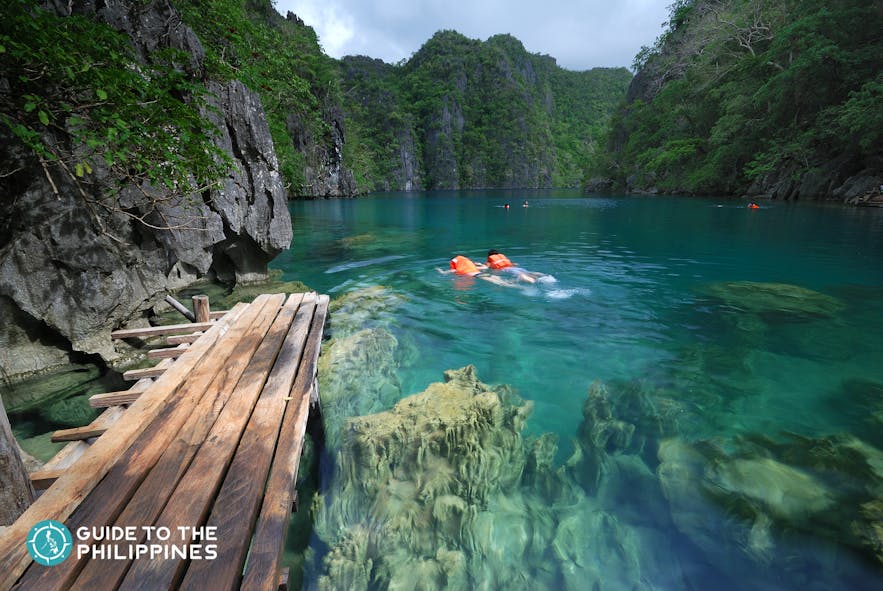
Undoubtedly one of the most photographed and iconic destinations in the Philippines is Kayangan Lake in Coron , Palawan. Going on a Kayangan Lake Coron tour will allow you to see its lagoon that is a dreamy mix of blues and greens glistening on a bright, sunny day. It should definitely be on your Coron Palawan itinerary .
- Check out our Coron tour packages and other things to see and do in Coron
- Read our guide on diving in Coron
- Browse our list of the best hotels and resorts in Coron
Kayangan Lake tours will take you to the jagged limestone cliffs and islets surrounding the lake. All these add up to a dramatic landscape, best seen from a 10-minute climb up a hill. Curiously, this view is not of the actual Kayangan Lake but the area where the tour boats park, but it is still breathtaking nonetheless.
As spectacular as the views are above ground, the real gem is hidden underneath the lake’s glass-like waters. Rock formations and schools of fish abound, making the area a favorite snorkeling and free-diving spot for visitors and one of the most popular Coron Palawan tourist spots .
The island destination is also famous for island-hopping in Coron and C oron wreck diving , among many other must-try Coron tours . It's also a romantic destination and is a popular location for vacation packages for couples .
See our popular Coron Tours and Activities
Coron island hopping tour to kayangan lake & barracuda lake | palawan super ultimate package, private busuanga airport to or from any hotel in coron town van transfer service, shared coron busuanga airport to or from coron palawan town proper transfer service.

Many travelers skip Manila and make their way to the Philippines' other islands, but a day or two in the country’s capital to go on Manila tours is still highly recommended, especially for those looking for the best places in the Philippines for a family vacation .
- Check out our list of the best private resorts near Manila
This 60-hectare urban park is where you will see the Rizal Monument, marking the execution site of the country’s national hero, Dr. Jose Rizal. Manila Bay’s breeze keeps the Philippine flag waving from a 46-meter flagpole fronting his monument.
The park also features manicured gardens, ponds, and a wide water fountain that lights up and dances to Filipino tunes at sunset. The park area is also home to a network of National Museums that you can visit .
- Cebu to Manila flights
- Davao to Manila flights
- Tacloban to Manila flights
- Iloilo to Manila flights
- Bohol to Manila flights
- Bacolod to Manila flights
- Legazpi to Manila flights
See our popular Manila Tours & Activities
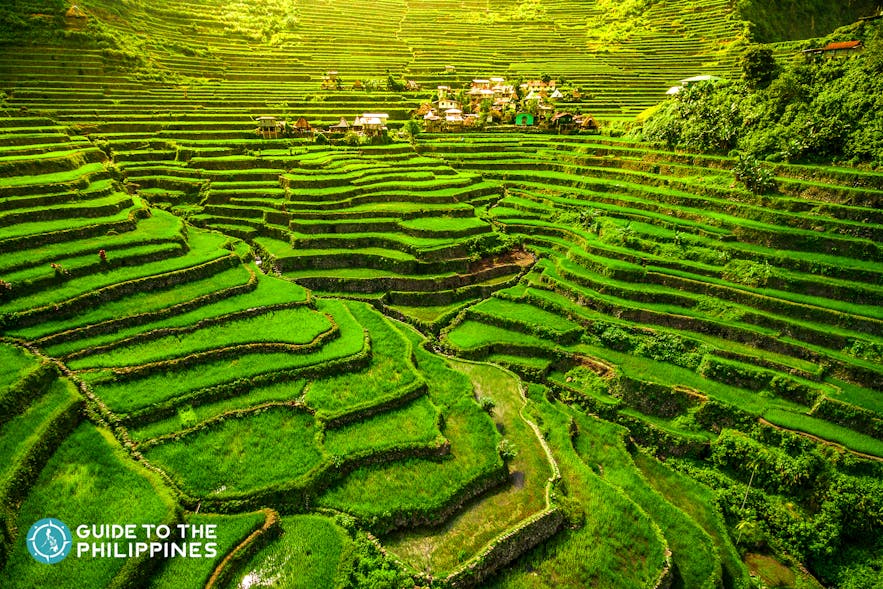
Hand-chiseled some 2,000 years ago, the Banaue Rice Terraces in Banaue of Ifugao, North Luzon , is a remarkable destination and is truly one of the most beautiful places in the Philippines and regarded as one of the Philippines' iconic landmarks.
Sit in a colorful jeepney as it cruises along winding roads in Banaue, and views of dramatic mud-walled rice terraces leave you in awe.
The Ifugao people were highly skilled in carving both wood and mountainsides. The Banaue Rice Terraces is listed as a UNESCO World Heritage Site . It offers spectacular views of emerald hues during the rice-growing seasons of April-May and October-November.
- Check out our list of things to do in Baguio and our Baguio tour packages
- See Baguio hotels that you can book for your trip
Banaue and its many natural attractions may pack a lot of tourists so you can make your way further to quieter Batad Rice Terraces and take a quick dip at its mighty Tappiya waterfalls. You can also explore nearby Baguio City or pick fresh strawberries in La Trinidad, Benguet .

See our popular North Luzon Tour Packages
5. cebu’s beaches and diving spots.

Cebu has been declared part of UNESCO’s Network of Creative Cities, but its main treasure lies deep down. The island draws over two million foreign travelers every year, who are greeted by rich waters teeming with abundant marine life. There are also many Cebu hotels that you can book for your trip.
Diving in Cebu is also a great experience as the island boasts many beautiful Cebu diving spots , featuring underwater caves, shallow shipwrecks, and marine sanctuaries.
- Browse our list of the best beachfront resorts in Cebu and the top Cebu tourist spots
- Check out our Cebu tour packages with airfare and our Mactan Island tours
- Explore other islands in the Visayas region. Check out our Bacolod-Iloilo-Guimaras itinerary
- See other Cebu tours you can add to your itinerary
Cebu island hopping tours are popular, thanks to the beaches of Cebu , Mactan , Camotes, and Bantayan Island . Moalboal island hopping tours are also available for those who want to explore more of Cebu. Off the northernmost tip of Cebu, tiny Malapascua Island packs many surprises, including diving with thresher sharks. Apart from diving in Malapascua , you can also go on a sardine run tour . For a hassle-free experience, book Malapascua diving packages .
See our popular Cebu Diving Courses and Packages
Fun 5-day cebu discover scuba diving package at club serena resort with airfare from manila, cebu bantayan island 3-hour refresher dive course with divemaster assistance, gear & boat transfers, cebu bantayan island freediving at obo-ob reef for 2 hours with divemaster, gear & boat transfers.
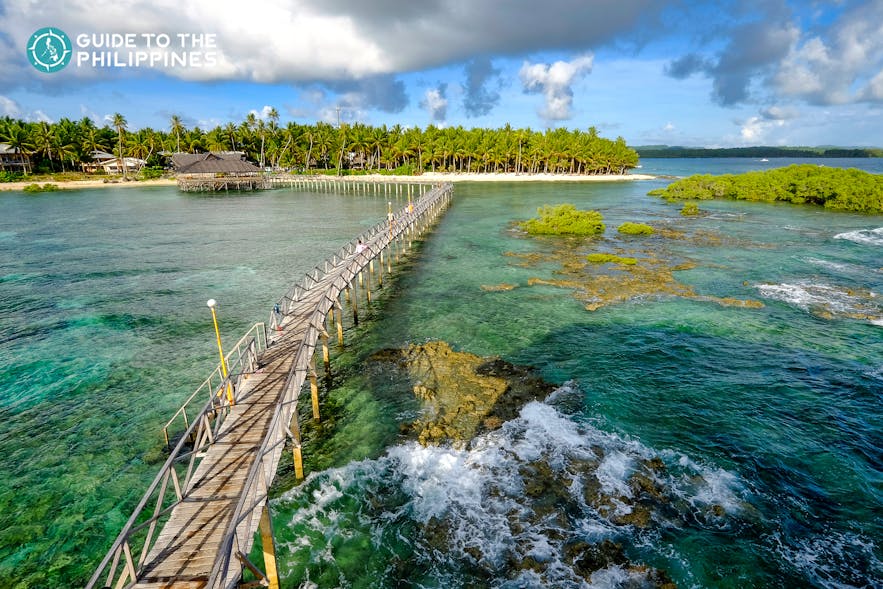
Siargao ’s rise as a top tourist destination in the Philippines is nothing short of meteoric. Once a sleepy island in Surigao del Norte, it has become one of the favorite destinations and playgrounds for travelers, and it is primarily because of one activity: surfing.
It is now known as the Philippines' surfing capital , and some even regard it as the surfing mecca of Asia.
- See our list of Siargao private tours
- Read our article on the best resorts in Siargao
- Check out other rainy season activities in the Philippines
- Find other Siargao experiences and Siargao tour packages
Surfers are drawn to Cloud 9, the most famous surfing spot in the entire country and a must in any visitor's Siargao itinerary . From November until April, all is well with Cloud 9’s thick tubes, making it a perfect place to get stoked (note: it is recommended for advanced surfers only).
But you do not need to go surfing in Siargao to enjoy this island destination as there are also other Siargao tourist spots to visit, like rock pools, waterfalls, and the nearby Sohoton Lagoon, where you can swim with thousands of non-sting jellyfish. You can go island hopping in Siargao to visit some of its natural attractions, including Sugba Lagoon , Naked Island , Daku Island , and Guyam Island .
See our popular Siargao Tours and Activities
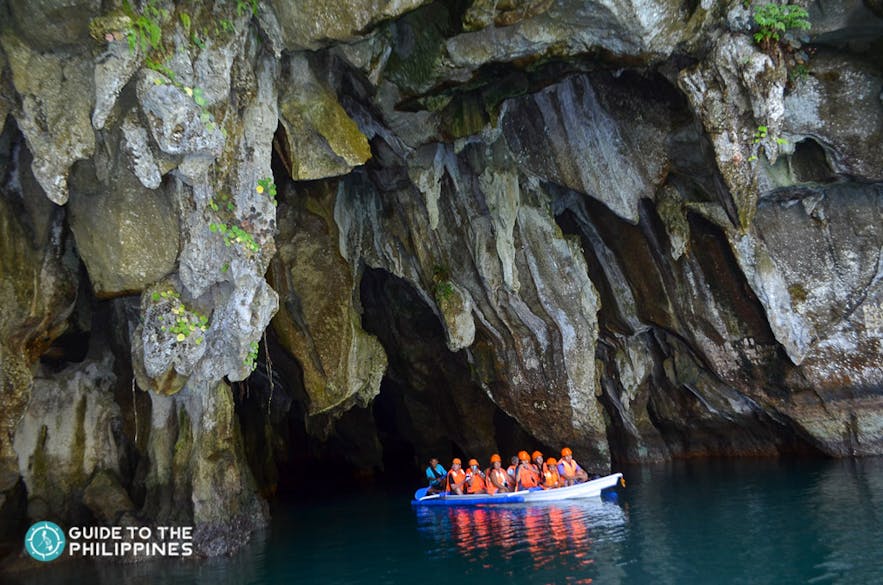
The gateway to the Philippines’ Last Frontier, Palawan , is its capital Puerto Princesa . It is here that you can find the world’s longest navigable underground river and a UNESCO World Heritage Site , the Puerto Princesa Underground River or the Puerto Princesa Subterranean River National Park. To explore this world-famous attraction and one of the best Philippine caves , book a Puerto Princesa underground river tour.
Paddleboats of the Puerto Princesa underground river tours cruise through scenic limestone cliffs as they make their way through the accessible area (1.5 km) of the underground river cave.
- Find the best Puerto Princesa hotels for your trip
- See other things to do in Puerto Princesa
- Check out other Puerto Princesa activities that you can do
- Read our article on Port Barton resorts
The park is also teeming with wildlife like crab-eating monkeys, monitor lizards, and bats. Island hopping escapades in Honda Bay and a visit to the Crocodile Farm are also highly recommended among the many things to do in Puerto Princesa .
See our popular Puerto Princesa Underground River Tours
Shared puerto princesa underground river tour in palawan with lunch & hotel transfers, shared palawan puerto princesa underground river tour with lunch & transfers, private puerto princesa palawan underground river tour & buenavista view deck with lunch.
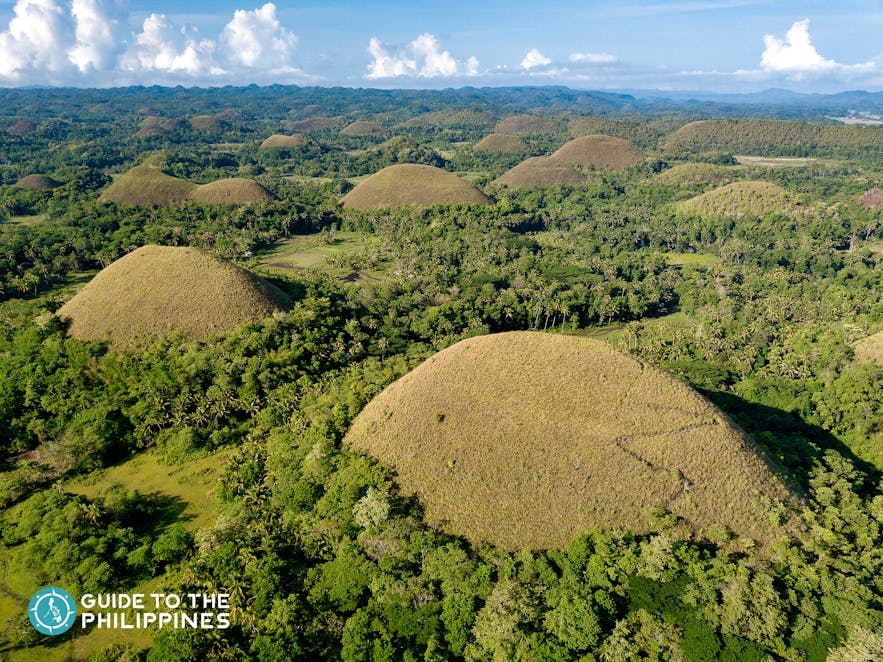
Included in the UNESCO World Heritage Natural Monuments list, the Chocolate Hills of Bohol are a geomorphic wonder and truly a sight to behold. It is one of the amazing tourist spots in the Philippines to offer a unique landscape, with its 1,268 cone-shaped hills that turn chocolatey brown during the dry season, hence its name.
The limestone hills in this iconic Philippine landmark vary in size but almost look similar in shape and range from 30 to 120 meters in height. It’s a must-add to any itinerary for Bohol trips .
Make your way to the town of Carmen, where the Chocolate Hills Main Viewpoint can be found. You can also see the hills via Chocolate Hills tours or Bohol countryside tours . Aside from the Chocolate Hills, there is also a treasure chest of natural wonders and other fun things to do in Bohol , including a relaxing Loboc river cruise and exploring Balicasag Island, a popular Bohol diving spot . You can also go on Panglao Island tours , and Philippine Tarsier Sanctuary visits , where you can see the world’s second-smallest primate. At night you can visit Abatan River and see some of the rarest fireflies in the Philippines .
- Read our article on the best resorts in Bohol , including Bohol beachfront resorts
- Check out our Bohol tour packages
- Book Panglao resorts in Bohol for your trip
- See our Cebu-Bohol tour packages
- Secure your Philippines ferry ticket booking
See our popular Chocolate Hills Tours
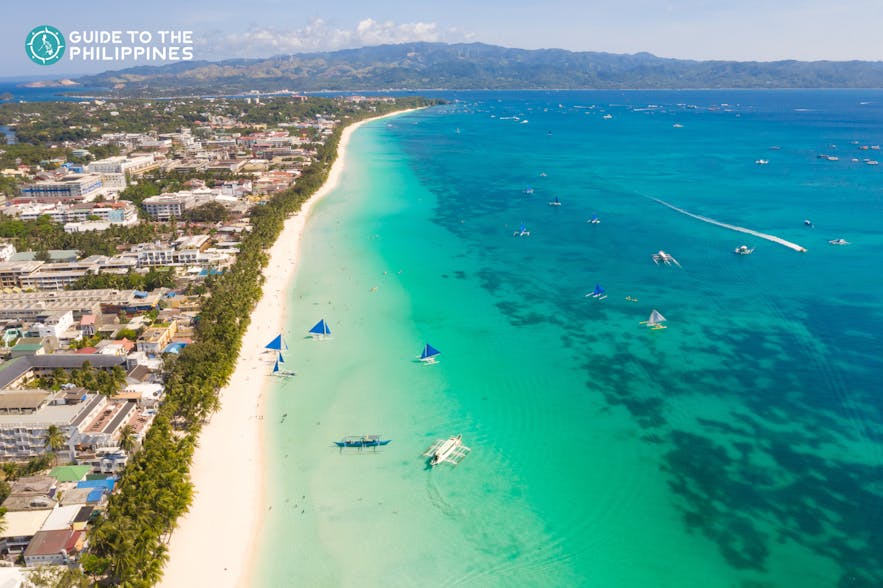
Long hailed as one of the best white sand beaches in the Philippines and the entire world, Boracay ’s claim to fame is its 4-kilometer stretch of pure white, powdery sand called White Beach .
Cliche as it sounds, White Beach is truly postcard-perfect, with tall coconut trees lining it and crystal-clear calm waters rounding up its unmatched beauty, making it the top attraction in Boracay tours and the best tourist destination in the Philippines.
Those who want to indulge during their holiday can also do so, as Boracay is home to some of the best 5-star hotels in the Philippines , as well as several honeymoon resorts and some of the best beach resorts in the Philippines . You can also have a workation here
Its prominence in global publications has drawn in an influx of tourists over the last decades, and there is no shortage of hotels , restaurants , and Boracay bars on the entire island.
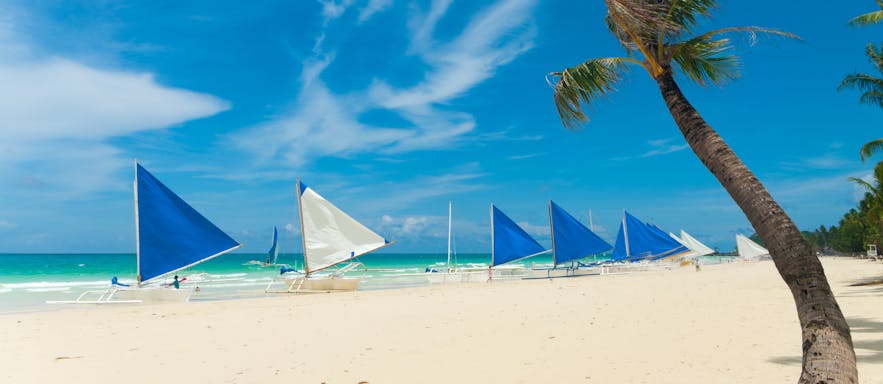
- Check out our lists of the best beachfront resorts in Boracay Island and hotels in Boracay for family
- Browse our Boracay tour packages and Malay hotels
- Read our article on the best golf courses in the Philippines , including one in Boracay
There are plenty of things to do in Boracay , and you can add other spots to your Boracay itinerary , including Puka Beach and Diniwid Beach, both of which offer a quiet respite and some of the best relaxing vibes during the daytime. Other things you can do in Boracay include White Beach tours and activities like Boracay banana boat riding, Boracay jetskiing , paddleboarding, paraw sailing in Boracay, snorkeling in Boracay, helmet diving in Boracay , and parasailing in Boracay .
See our popular Boracay Tours and Activities
Boracay island hopping shared tour with lunch, kawa hot bath & snorkeling package, boracay island hopping package private tour with lunch, snorkeling gear & kawa hot bath, boracay paraw sailing sunset experience private tour.
Plan Your Ultimate Escape to the Philippines
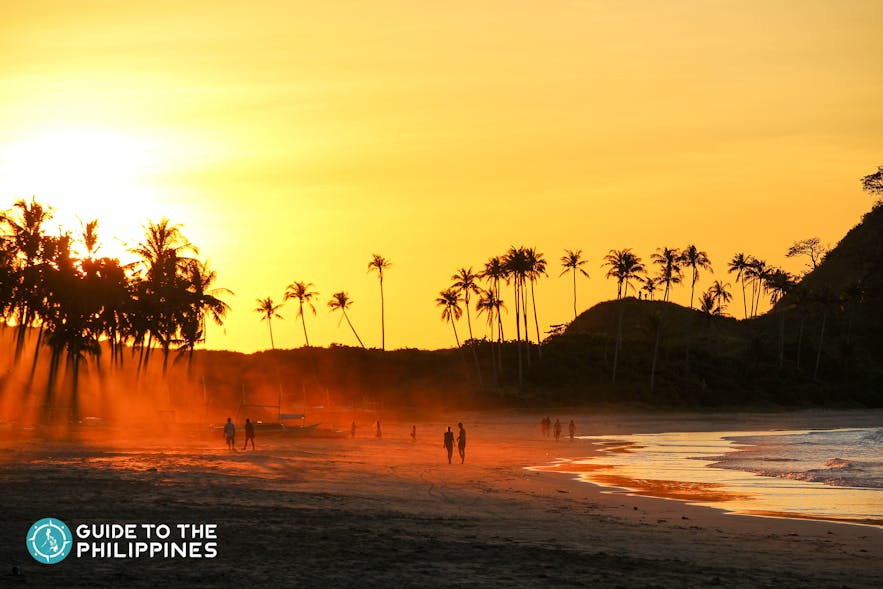
It is impossible to visit all the best tourist spots in the Philippines in one go unless you have all the time in the world. But carefully planning out your Philippines itinerary will surely take you to some of the most unforgettable landscapes and fun-filled adventures you will ever see and experience. If you want a pampered experience, book a stay at one of the luxury resorts in the Philippines or the best wellness resorts in the Philippines , or try glamping in the Philippines .
- Cheap flights to Manila
- Dubai to Manila flights
- Singapore to Manila flights
- LAX to Manila flights
- Read our guide on airports in the Philippines
Aside from its spectacular views, the Philippines is also home to one of the most hospitable, warm, and free-spirited people you will ever meet. Before you finalize your online trip booking or your Philippines holiday packages , read more of our Philippines travel guides to help you plan the ultimate escape and learn the reasons why you should visit the Philippines .
See our popular Top Tours in the Philippines
Popular articles.

Best Palawan Guide: Top Tours, Where to Stay, How to Get Around
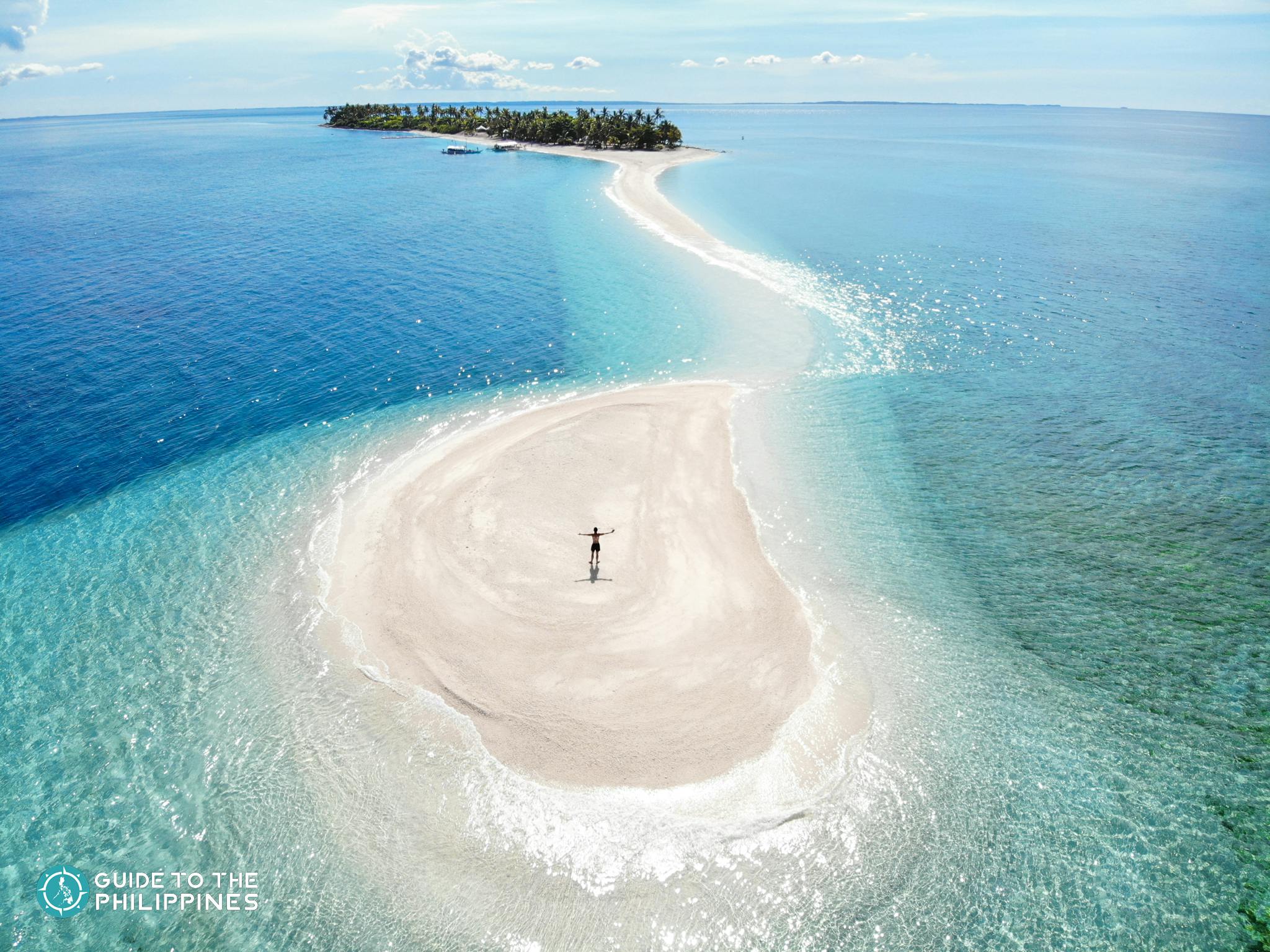
20 Most Beautiful Sandbars in the Philippines: White Sand, Longest, Vanishing
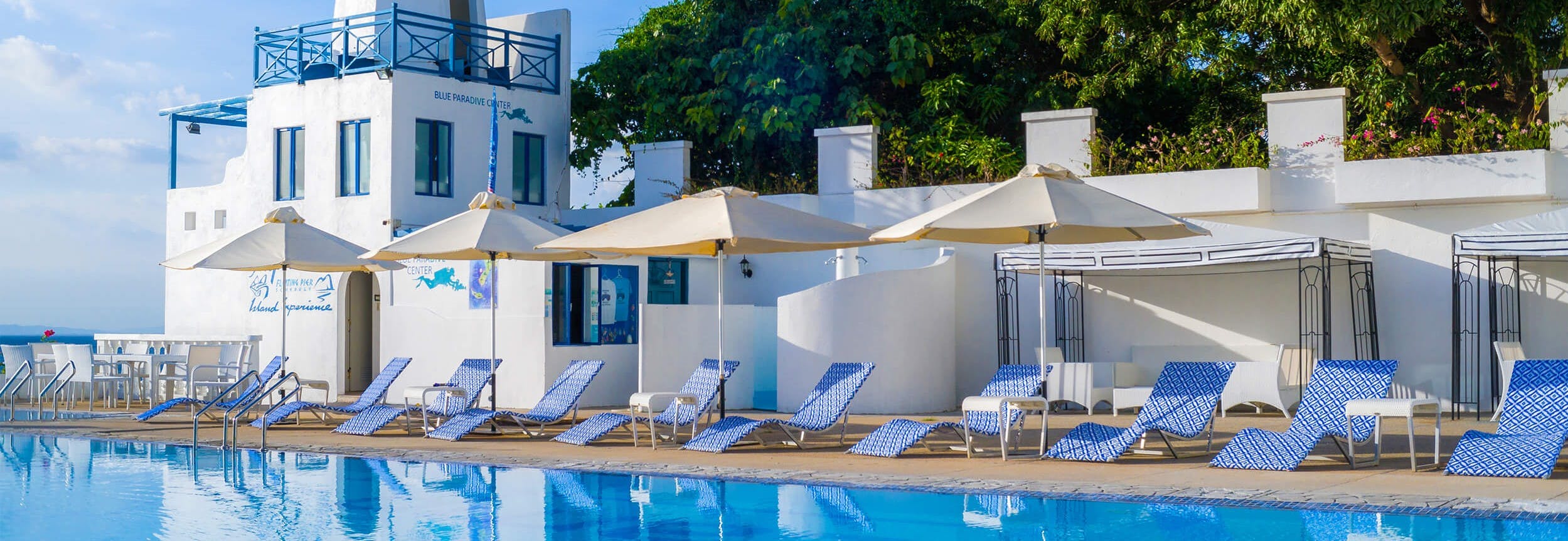
11 Best Santorini-Like Resorts in the Philippines: Near Manila, Cebu, Palawan, Vigan
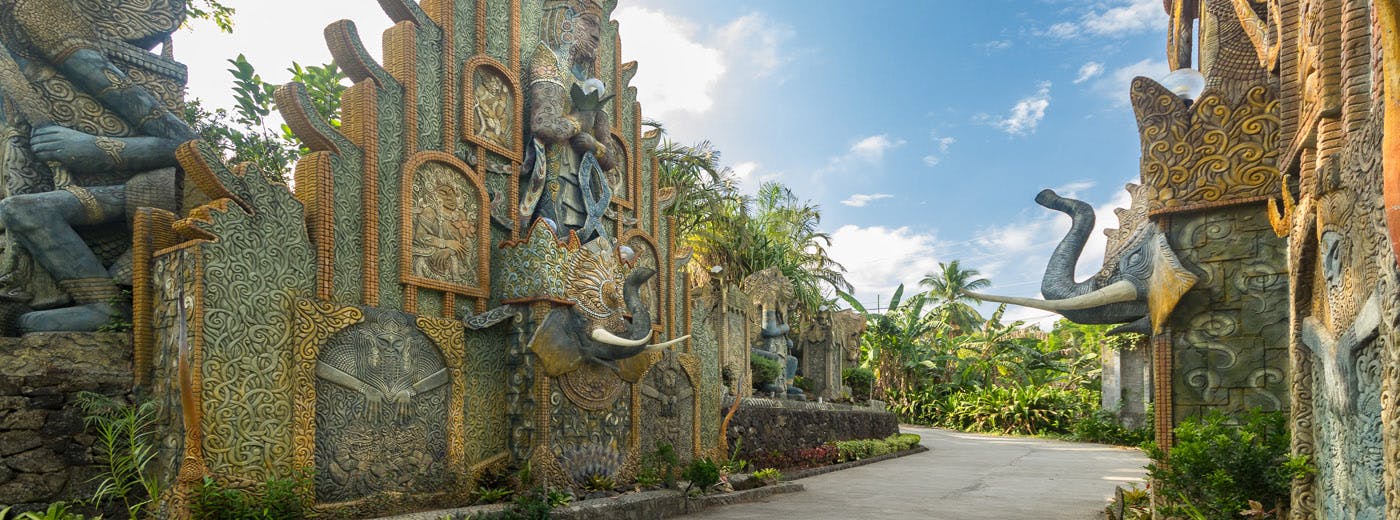
15 Best Tropical Bali-Like Resorts in the Philippines: Near Manila, Siargao, Cebu, Bohol
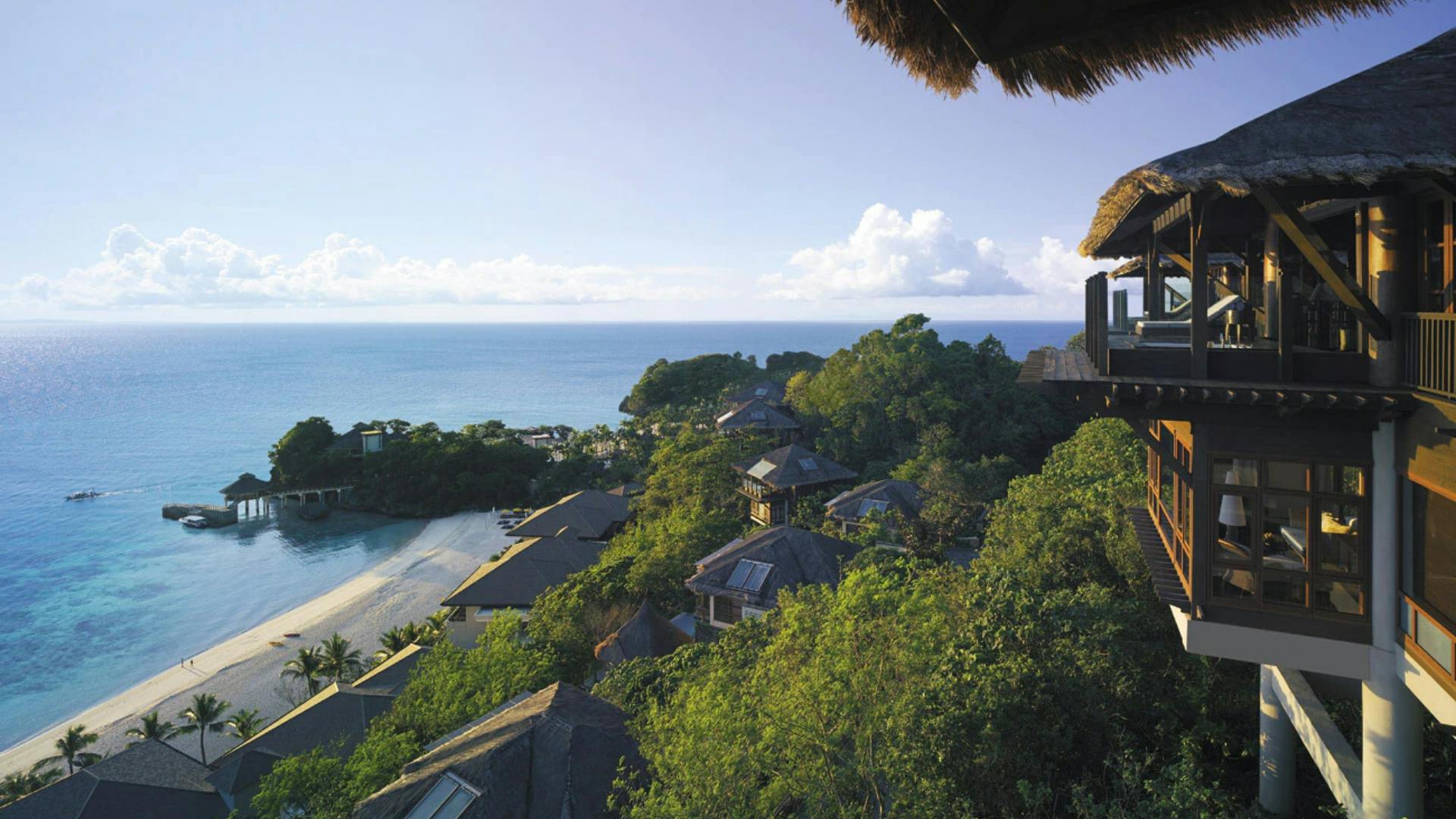
10 Best Treehouse Resorts in the Philippines for a Scenic Getaway at Mountains, Beaches & Rivers
Other interesting articles.
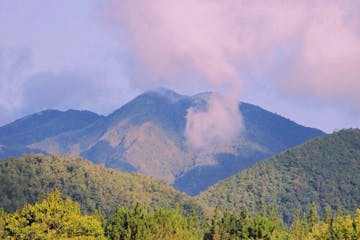
14 Bukidnon Tourist Spots That You Shouldn’t Miss
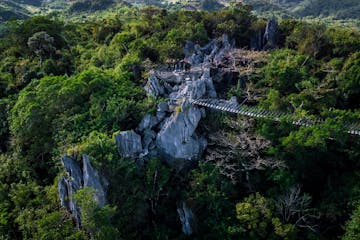
13 Philippine Ecotourism Sites and Activities You Can Sign Up To
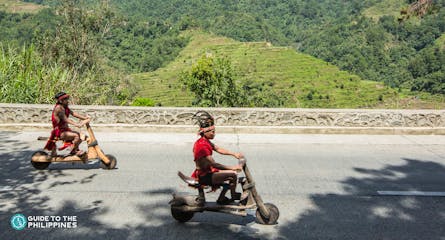
Top 18 Banaue Tourist Spots: Rice Terraces and Nature Trips

Download the Philippines’ biggest travel marketplace to your phone to manage your entire trip in one place
Scan this QR code with your phone camera and press the link that appears to add the Philippines’ biggest travel marketplace into your pocket. Enter your phone number or email address to receive an SMS or email with the download link.
Top things to do in the Philippines
Discover all the adventures you can experience in the Philippines
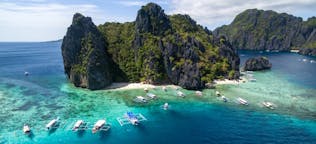

Philippines Tour Packages
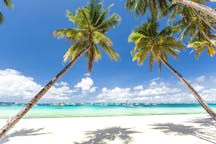
Boracay Island
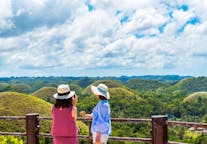
Bohol Island
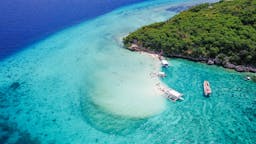
Cebu Island
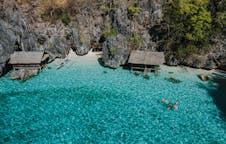
Coron Palawan
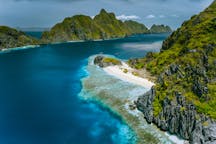
El Nido Palawan
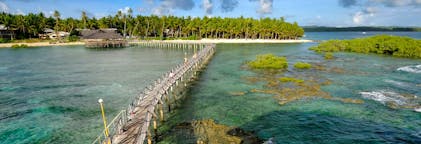
Siargao Island
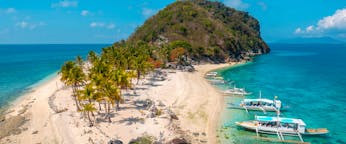
Iloilo City and Nearby
By providing an email address. I agree to the Terms of Use and acknowledge that I have read the Privacy Policy .
Reinventing tourism
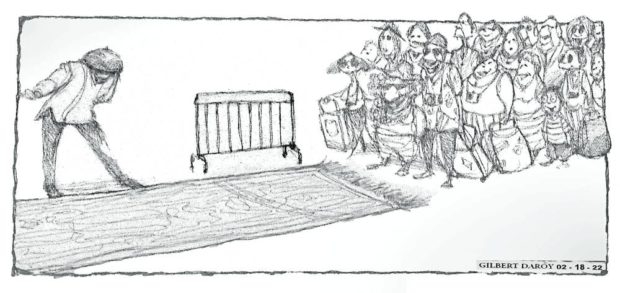
After almost two years of travel restrictions, the Philippines finally reopened its doors last Feb. 10 to international tourists. More than 7,000 visitors have since arrived from countries like the United States, Australia, China, and Japan as of last week—a mix of returning tourists, balikbayans, and revenge travelers.
Tourism Secretary Bernadette Romulo Puyat said stakeholders in the tourism industry were ecstatic over the government’s decision to reopen the country’s international borders to fully vaccinated tourists. The re-opening is expected to boost the tourism sector which took a beating when the government imposed severe lockdowns in 2020.
In 2019, before the pandemic, the country welcomed 8.26 million visitors but numbers fell by as much as 82 percent in 2020 to 1.48 million (2021 figures are expected to be released in June). This severely impacted the industry: tourism’s share to the gross domestic product fell to 5.4 percent in 2020 from 12.8 percent in 2019; the average share over the past five years has been at 10.5 percent. In the process, about 1.1 million tourism-related jobs were lost. Given this low base, economists are predicting a strong rebound for the sector as the world begins to open up again.
Tourism workers, many of them idle during the lockdowns and therefore no income, welcomed the news. In Intramuros, Manila, a kutsero was preparing the few horses he had left, while a tourist boat worker in Loboc River, Bohol, was hopeful that, finally, they wouldn’t have to operate at a loss. Officials believe that bringing back international tourists would have a multiplier effect on other industries such as agriculture and fisheries as demand for their products will increase. “Masaya sila na finally bukas na, ibig sabihin, everything is going back to normal,” Puyat said.
But should things really return to pre-pandemic normal?
The study, “Bootstrapping tourism post-COVID-19: A systems thinking approach” published in September 2021, said the tourism industry should use the pandemic as an opportunity to “reinvent and rectify” old models and move toward sustainable tourism. To do this it proposed a three-fold strategy: 1) less emphasis on destination and more on the value chain by tapping into the resources of local communities (accommodation, attractions, transport, food and beverage, souvenirs, etc.) to offer a unique travel experience to tourists; 2) customize services and split to smaller tour groups to help lessen community and environmental disturbances; and 3) focus on quality over quantity, or smaller segments instead of mass-based travel.
Mass tourism, while it gave more jobs and boosted related businesses, also undoubtedly brought headaches such as traffic, overcrowding, garbage, destruction of cultural spots and natural habitats, and with little benefit to local communities that had to bear the brunt of higher real estate prices and more expensive cost of living. Philippine destinations have not been spared from these problems, a few examples: rapid development in Boracay has disturbed the habitat of endangered species such as flying foxes and fruit bats on the island; and garbage in Baguio City, the country’s summer capital, has continued to mount even during the pandemic. In addition, Supertyphoon “Odette” devastated top tourist destinations Siargao, Cebu, and Palawan last December, affecting the planned reopening of resorts and other establishments. To address these numerous problems, conservationists have appealed for the protection of the remaining beach forests in Boracay, while Baguio City is mulling the imposition of a garbage tax on tourists. As for Odette-devastated areas, the government has extended low interest and collateral-free loans to affected businesses to help them rebuild and reopen.
Rebuilding, however, is not enough if it means merely propping up the old system instead of reinventing it to adapt to the new normal. At least the Department of Tourism, under Puyat’s helm, appears to be on the right track. Over the past two years, it focused on strengthening domestic travel by developing tourism circuits such as outdoor/open spaces (bike lanes, farms, wellness), and nature destinations with emphasis on high-quality experiences to cater to new-normal travelers. The department poured resources into its COVID-19 tourism response and recovery plan: crafting health protocols from scratch, trying to keep the industry afloat by helping workers and business owners, and laying the groundwork for what lies ahead post-pandemic including concerns about the environment and the sector’s recovery. Sustainability, Puyat said, remains key.
Her challenge to the next tourism secretary: “Adopt it or make it better.”
RELATED OPINION
Global tourism needs a shot in the arm
Subscribe to our daily newsletter

Fearless views on the news
Disclaimer: Comments do not represent the views of INQUIRER.net. We reserve the right to exclude comments which are inconsistent with our editorial standards. FULL DISCLAIMER
© copyright 1997-2024 inquirer.net | all rights reserved.
We use cookies to ensure you get the best experience on our website. By continuing, you are agreeing to our use of cookies. To find out more, please click this link.
Department of Tourism (DOT): What You Need to Know
The Department of Tourism is an agency under the national government of the Republic of the Philippines, responsible for creating and maintaining a favorable environment for the growth of tourism in the country. The DOT seeks to attract tourists to visit the Philippines and to ensure their safety while in the country. This aims to improve economic, social, and cultural value of tourism amongst Filipinos. In this respect, there had been significant improvements in the Philippine tourism industry over the last decade or so.
Also Read: How to Register in One Health Pass Philippines Online – Philippine Travel Pass
As the Department of Tourism is responsible for the country’s development in the tourism industry, its goal is to promote growth and increase opportunities in tourism, contributing to job generation and poverty alleviation in rural areas. However, there’s so much more to this department than what is typically known to mot Filipinos. In this guide, we will take a look at the services of the department and how its programs affect Filipinos and the country’s economy, in general. Keep reading to learn more.
Table of Contents
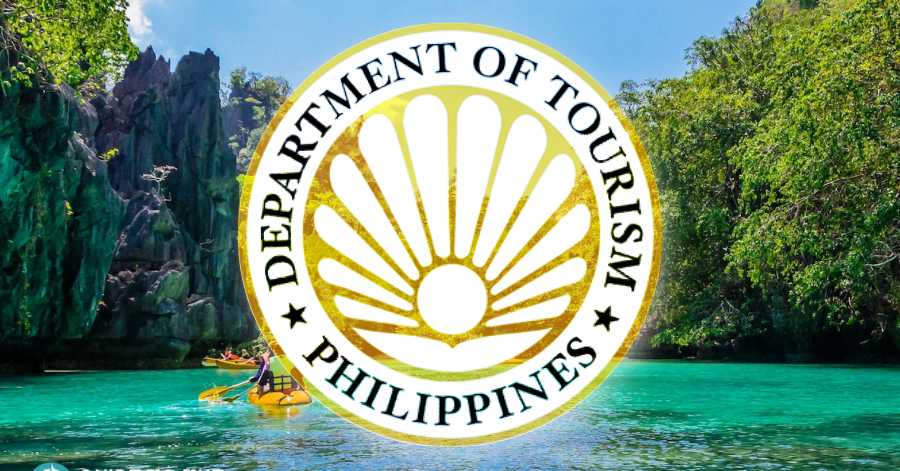
What is the Meaning of DOT?
DOT stands for the Department of Tourism in the Philippines.
What is the Purpose of DOT?
The Department of Tourism (DOT) is the primary planning, implementing, and regulatory government agency tasked to develop and promote the Philippine tourism industry, both domestic and international.
The agency is also tasked to manage, operate, and maintain all government-owned tourism facilities. It is the sole owner of all Philippine tourism-related trademarks, as well as its logo and slogan “It’s more fun in the Philippines.” The DOT is headed by a Secretary who reports directly to the President of the Philippines.
The DOT is mandated to formulate tourism plans and programs to promote, develop and regulate the country’s tourism industry as a major socio-economic activity that generates foreign currency and local employment, and to spread the benefits of tourism to a wider segment of the population with the support, assistance, and cooperation of both the private and public sectors.
The DOT is also responsible for promoting the Philippines as a tourist destination, and to this end has created several tourism campaigns that have become well-known around the world. These include “It’s more fun in the Philippines;” “Pilipinas Kay Ganda;” “Sights, Sounds and Flavors of the Philippines;” and “Traveling with Children”.
The DOT envisions “to position the Philippines as a premier tourist destination in Asia”. This vision aims to make travel an integral part of Filipino life through sustainable tourism development that will create new jobs for Filipinos while conserving heritage sites and protecting cultural identities.
In its commitment to serve its purpose, the department is working with the following agencies:
Duty-Free Philippines Corporation: a government-owned and controlled corporation which operates the country’s airports and seaports. The company is engaged in the sale of duty-free goods to foreign nationals who are transiting or on a stopover in any of its facilities. It also operates retail stores at Ninoy Aquino International Airport (NAIA) Terminal 1, NAIA Terminal 2, NAIA Terminal 3, Clark Intl. Airport and Mactan-Cebu Intl. Airport.
Intramuros Administration: the agency responsible for the administration, promotion, and development of Intramuros as one of the country’s tourist destinations.
National Museum : the government agency mandated to preserve, develop, and promote Philippine history and culture through its collection of artefacts, books, documents, and other materials related to Filipino heritage.
National Parks Development Committee: the agency responsible for the administration, development, promotion and protection of all national parks and other protected areas in the country. The committee is also tasked with promoting ecotourism activities that are consistent with preserving the natural resources found in these areas.
Nayong Pilipino Foundation: the government agency mandated to manage and develop the country’s tourism infrastructure through its Nayong Pilipino Parks, a network of theme parks showcasing Philippine culture and heritage. The foundation was formed in 2002 as a subsidiary of the DOTC.
Philippine Commission on Sports Scuba Diving: the government agency tasked with promoting and protecting the interests of recreational divers in the Philippines. The PCSSD is also responsible for regulating scuba diving activities in all Philippine waters and for ensuring that divers are properly trained and equipped before engaging in these activities.
Philippine Retirement Authority: the government agency tasked with managing the country’s pension and retirement funds. The PRSA was created by virtue of Executive Order No. 386, which was issued by former President Fidel Ramos in 1996.
Tourism Infrastructure and Enterprise Zone Authority (TIEZA): the agency that oversees the development of tourism infrastructure and enterprise zones in the Philippines. TIEZA is tasked with promoting sustainable tourism, managing public-private partnerships, developing private property for tourism purposes, and providing assistance to investors interested in setting up new businesses in the country.
Tourism Promotions Board Philippines: the entity that promotes tourism in the Philippines. The Tourism Promotions Board of the Philippines is a government agency under the Department of Tourism. It was created through Executive Order No. 546, which was signed by former President Fidel Ramos on June 21, 1995.
Brief History
The Philippine Travel & Tourism Association was established in 1950 to promote the country as a major travel destination. In 1956, the Board of Travel & Tourist Industry was established by Congress as a law following the Integrated Reorganization Plan of 1972.
The following year, the Department of Commerce and Industry was merged with the Trade and Tourism Department to form a new agency known as the Philippine Tourism Commission. The objective of the commission is to oversee the development of the tourism industry in the country.
In 1973, President Ferdinand Marcos established a new Department of Tourism, which was composed of two separate agencies. One of these was the Philippine Tourism Authority, while the other was the Philippine Convention Bureau. The new agency was then renamed the Ministry of Tourism. The structure of the department was changed following the implementation of the 1973 Constitution, which provided for the division of government.
In 1986, President Corazon Aquino signed Executive Order 120 and 120A, which reorganized the Department of Tourism. The Convention Bureau was then renamed the Philippine Convention & Visitors Corporation. The Intramuros Administration was also included in the department. In 1998, the Tourism Department was instrumental in celebrating the country’s independence from Spain.
In 2003, the Department of Tourism launched the World Wide Opportunities for Philippines (WOW Philippines) project, which was under the leadership of Senator Richard Gordon.
The passage of Republic Act 9593 in 2009 was regarded as the most significant event in the tourism industry of the Philippines.
Functions and Responsibilities of DOT
The Department of Tourism is responsible for promoting tourism in the Philippines. It does this by developing and managing tourist spots, as well as promoting them through advertising campaigns. The department also regulates the industry to ensure that all businesses are operating within the law.
Office of the Secretary
The Office of the Secretary is responsible for providing leadership and direction to the Department of Tourism. It is also responsible for developing policies and programs, reviewing the effectiveness of the Master Plan, and advising the President on all matters related to the tourism industry.
Tourism Promotions Sector
The Department of Tourism’s tourism promotion sector is responsible for promoting the Philippines as a preferred tourist destination. It is also responsible for developing and implementing marketing programs and promotional activities that are geared toward increasing the country’s tourism profile. It also oversees the department’s overseas field offices that are responsible for enhancing the tourism promotion program of the country.
Tourism Services and Regional Offices Sector
The sector is responsible for ensuring that the various services and facilities of tourist establishments are maintained and operated in a manner that is consistent with international standards. This includes setting uniform standards for the quality of service and ensuring that the establishments are following proper safety and environmental practices.
This division is also responsible for overseeing the implementation of the department’s policies and programs, as well as maintaining the effectiveness of the department’s regional offices.
Planning, Product Development and Coordination
The division is responsible for developing and implementing the department’s Master Plan, as well as its various component programs. It is also responsible for monitoring the implementation of the plan and developing new investment opportunities that will benefit the tourism industry.
Internal Services Sector
The division’s various sections provide effective and efficient services to the Department of Tourism, which ensures that its operations are conducted in a legal and ethical manner. These include human resources management, information technology services, general services administration, and budgetary management.
The Department of Tourism is responsible for the following:
-To formulate and implement plans and policies on tourism development in coordination with other government agencies involved in tourism promotion.
-To provide direction, supervision and control over the performance of all tourism-related activities by local government units (LGUs) within their respective territorial jurisdiction.
-To formulate and implement policies on the development and promotion of international tourism.
-To exercise supervision over the Philippine Tourism Authority (PTA), including its local offices.
-To coordinate with other government agencies concerned with tourism development in order to ensure that their policies will not be inconsistent or conflicting.
Laws enacted by the DOT
-Republic Act No. 9183 (Tourism Act of 2004), which provides for the establishment of a National Tourism Promotion Board and a Tourism Infrastructure and Enterprise Zone Authority;
-Republic Act No. 7916 (Tourist Attractions Development Act of 1995) is aimed at promoting tourist attractions development in the country through its provision on incentives to investors;
-Republic Act No. 7593 (An act providing for the establishment of an inter-island linkage system);
-Republic Act No. 7591 (An act establishing the Philippine Tourism Authority); and
-Senate Bill No. 1526 (Tourism Development Fund Act of 2009).
List of Programs and Services of DOT
The Department of Tourism (DOT) is the government agency responsible for promoting and developing the Philippine tourism industry. It is headed by a Secretary of Tourism appointed by the President of the Philippines.
The DOT has several programs and services, namely:
International Inbound Marketing Program
International Inbound Marketing Program is a service that promotes Philippine tourism to foreign markets. It aims to attract more international tourists to visit the country and spend their money here. This program also helps in promoting local tourism products, services, and events overseas so they can be known by international travelers.
Inbound Marketing Support Services
The Inbound Marketing Support Services is a program that helps develop marketing strategies for the Philippine tourism industry. It also assists local government units (LGUs) and private companies in developing their tourism products, services, and events.
The program also supports the development of a brand identity for Philippine tourism. It aims to establish the country as a prime destination for international visitors by ensuring enough travel-related products and services are available in the market.
Outbound Marketing Program
The Outbound Marketing Program aims to promote Philippine tourism in key markets abroad. It also provides support services for local travel agencies and tour operators. The program helps set up trade shows, road shows, and other events that allow local tourism stakeholders to showcase their products or services to international visitors.
Marketing Research and Intelligence Division
The Marketing Research and Intelligence Division (MRID) is the central marketing research unit of the Department of Tourism. It provides business intelligence to help guide the Department’s marketing strategies and plans. The division conducts market surveys, researches trends in tourism demand, and analyzes data on visitor arrivals by country of origin.
Information Technology Center, Inc.
The Information Technology Center, Inc. (ITC) is the IT arm of the Department of Tourism. It provides information technology services to multiple government agencies, including the DTI and other departments under the DOTr, such as CICT and CAAP. The division also handles e-commerce systems for both domestic and international travelers.
Tourism Promotions Board
The Tourism Promotions Board (TPB) is the government agency responsible for promoting tourism in the Philippines. It implements various projects and programs that aim to boost tourism arrivals and generate more revenue from the industry. The TPB also manages advertising campaigns, such as “It’s More Fun in the Philippines”, which aims to increase awareness of Philippine destinations among international travelers.
Undersecretary for Tourism Program Management Office
The Undersecretary for Tourism Program Management Office (TPMO) is an agency under the Department of Tourism that oversees the implementation of various programs and projects. The TPMO also monitors the activities of other government agencies involved in tourism, such as CAAP, TPB, and DOT. Its main functions include creating tourism development policies and monitoring other agencies’ implementation.
World Trade Center Manila
The World Trade Center Manila (WTCM) is a business-centered building located along Pasay Road in Makati, Philippines. It is one of the most prominent landmarks in Metro Manila and is currently the country’s fourth tallest building. The building houses several shops, restaurants and offices that cater mainly to foreign companies doing business in the Philippines.
– SERVICES –
Check Payables : The agency’s payables or obligations to its creditors can be made through the issuance of modified disbursement system checks or government checks. These checks are usually issued after the approval of related documents.
Collection of Payments for Accreditation and Training/Fees/Bid Documents : All payments for the various services and activities of the Department of Tourism, including the accreditation and training, must be made in cash or check. These can be made through the following procedures: Order of Payment from the Accounting Division or the Accreditation Office.
Endorsement for Special Investor’s Resident Visa : -The service of the DOT endorsement saves you time and money because it gets you a resident visa without having to go back to your home country. You will be able to travel in and out of the Philippines with no problem as long as your visa is valid.
Endorsement of Tourism Development Project to the Board of Investments : The DOT endorsement of a tourism development project to the BoI is an essential step in getting a visa for your foreign investor. The BoI will help you decide which projects are eligible for investment by foreigners and how much money can be invested. If approved, you will get a certificate of investment eligibility that shows that the project has been approved. This document must be submitted with all other documents when applying for your visa at the Philippine embassy or consulate in your home country.
Endorsement for Tourism Road Infrastructure Program (TRIP) Proposal : The DOT also has a Tourism Road Infrastructure Program (TRIP), which is designed to improve the country’s tourism infrastructure through the construction of roads, bridges and flyovers. If you have a TRIP proposal and need an endorsement from the DOT for funding purposes, you will have to submit your proposal in person at any DOT office or send it via mail. The application form can be downloaded from the DOT website.
External Communications Handling : If you are a foreign company that wishes to set up an office in the Philippines, you will have to register with the SEC as an External Communications Handling (ECHC) agent. This is a requirement under Republic Act No. 1067 or the Securities Regulation Code of 2000. Once registered, your company will be able to provide services in relation to foreign investment into the country and communications between investors and their local partners.
Freedom of Information (FOI) Requests : If you are a foreign company, you may have to deal with Freedom of Information (FOI) requests. These are requests for documents that can be made by anyone who is interested in obtaining information about the government’s activities and policies. The government can reject these requests if they relate to “classified” matters or if providing the requested information would pose a security risk.
DOT Internship Application : Students who are interested in working as an intern with the Department of Tourism can apply online or by walk-in applications. To be eligible, you must be a Filipino citizen, have finished at least one year of college education, and speak English fluently. The application process involves submitting your resume and cover letter outlining why you would like to work with the DOT.
Issuance of Certificate of Tax Withheld : To get a Certificate of Tax Withheld, you need to submit an application form and pay the required fees. The DOT will then issue a certificate for you within three working days. This document is proof that your taxes have been withheld from your payment.
LDDAP/ADA Payables : To get LDDAP/ADA payables, you have to register with the DOT and apply for a license. After that, you will receive a list of documents needed to complete your application. You will then submit these documents and pay the required fees in order to get a license from the department.
Maintenance of Databank of Property Offerings : You need to maintain the databank of property offerings, which will be updated as soon as a new listing is added or an existing one is changed. You are also responsible for ensuring that all information in this database is accurate and up-to-date.
Media Coverage Requests : The Department of Tourism has a procedure for providing media and communication support to its various offices. These include its regional offices and other tourism-related agencies.
Payment through Checks : The agency’s obligations or payments to its creditors can be made through the use of a modified disbursement system, which is also known as government checks. These checks are issued after the approval of various documents.
Processing of Application for Vacant Position : The HR process for the recruitment of internal and external candidates for vacant positions is carried out according to the requirements of the ORAOHRA. As of 2017, the deadline for filling up positions has been set at nine months.
Readily Available Photos, Videos, and/or Reports Requests : The Department of Tourism’s media and communications department is responsible for providing a variety of media and communication services to its various offices.
Statistics Technical Assistance : The procedure for approval of requests for statistical data related to tourism is established by the Department of Tourism. It allows employees and other individuals to request such data.
Technical Assistance to Local Government Unit for Tourism Development Projects : The procedure for approval of a local government’s request for assistance in developing tourism infrastructure is outlined in this document.
Video: Department of Tourism-Philippines INFOMERCIAL
Here is an infomercial discussing the overview and Governance Performance Task of the Department of Tourism.
The Department of Tourism is responsible for promoting the Philippines as a tourist destination and for overseeing the country’s tourism industry. The department is headed by a Secretary of Tourism, who is a member of the Cabinet.
The department is tasked with developing and implementing policies and programs to improve the competitiveness of the Philippines as a tourist destination. It is also responsible for promoting the country’s tourism industry, and for regulating the tourism sector.
The department has several key units, including the Tourism Promotions Board, the Tourism Infrastructure and Enterprise Zone Authority, and the Philippine Tourism Authority. These units work together to promote the Philippines as a tourist destination and to develop and implement policies and programs to improve the country’s tourism industry.
Frequently Asked Questions
1. what is the role of the department of tourism in the hospitality industry.
The responsibilities of field offices include overseeing the activities of their staff members and providing them with the necessary information to make informed decisions. They are also responsible for the classification and approval of hotels and restaurants.
2. Who are the officers of the Philippine Department of Tourism?
The Department of Tourism is headed by Secretary Bernadette Romulo Puyat. Her deputies are Assistant Secretary for Policy and Planning Benito Bengzon Jr. and Assistant Secretary for External Affairs Rene Tingzon.
3. What are the functions of the DOT?
The DOT’s main functions are to promote and develop the country’s tourism industry; formulate policies and programs that will attract tourists; coordinate with other government agencies, local governments and private entities in order to implement these policies; conduct research on tourism-related issues, and provide information about the Philippines’ attractions to foreign tourists.
4. What are some achievements of the DOT?
The DOT has successfully attracted more foreign tourists to the Philippines. In 2017, the country welcomed almost 10 million visitors—a record high since it began recording tourist arrivals in 1952. The DOT also launched several projects that support the Philippine tourism industry, such as the “It’s More Fun in the Philippines” campaign in 2012 and its website, VisitPhilippines.com; the creation of the Tourism Infrastructure and Enterprise Zone Authority (TIEZA) in order to help develop tourism-related infrastructure; and the establishment of the Department of Tourism Academy (DOT Academy) to train local government officials, travel agents, and other stakeholders.
5. What are the roles and responsibilities of a tour guide?
Tour guides are responsible for providing travelers with information about the places they visit. They should also be able to manage groups and individuals, act as an intermediary between clients and local authorities (such as police officers), and make sure their clients have a memorable experience.
6. What steps should I take to become a licensed tour guide?
You should first make sure that you’re eligible for a tour guide license. You can apply for one at the Tourism Academy (DOT Academy) or the Department of Tourism (DOT).
7. Do I need a license to be a tour guide?
Yes. You will need to apply for a license from the Tourism Academy (DOT Academy) or Department of Tourism (DOT). What are the requirements for becoming a licensed tour guide? First, you must be at least 18 years old. Next, you should have completed a course on tourism in an accredited school or university. You should also pass the licensure exam and submit your application form with all necessary documents (including proof of citizenship).
8. Where can I apply for accreditation as a Tour Guide, Tour Escort or Tour Conductor in PH?
You can apply for accreditation at the Department of Tourism (DOT) or the Tourism Academy (DOT Academy).
9. How is my Tour Guide license printed and issued by the DOT?
Your license will be printed in a booklet form, which you can use as proof of your accreditation. The license is valid for one year from the date of issue and can be renewed upon submission of additional requirements.
10. Is there an expiration date on my Tour Guide license?
Yes. Your license will be valid for one year from the date of issue and can be renewed upon submission of additional requirements.
The Department of Tourism (DOT) is the government agency responsible for promoting tourism in the Philippines. It is under the Office of the President and led by Secretary Bernadette Romulo-Puyat. The DOT, which was established in 1959, promotes tourism through various programs and projects, including tourism promotions and marketing strategies, international trade fairs, grants to domestic and foreign travel agencies, airline companies and hotel chains, as well as airport improvements.
One of the biggest challenges facing the DOT is to increase international arrivals. In 2016, about 5 million tourists visited the Philippines; however, this number has yet been reached again since then due to political instability and other issues such as traffic congestion in Manila and increasing crime rates.
The DOT is also tasked with managing travel warnings issued by other countries against traveling to certain areas due to safety concerns or natural disasters. For example, travelers were advised against visiting Boracay Island after it was closed down due to environmental degradation caused by excessive tourism activities in 2018.
Filipinos, including OFWs, benefit from the work of the DOT by receiving more travel advice and tips from the agency’s website and social media accounts. This ensures that travelers are aware of the potential dangers and risks associated with traveling to certain places. The DOT also works closely with the Department of Foreign Affairs (DFA) to ensure that Filipinos abroad are protected from exploitation and abuse.
READ NEXT: PH Hailed as World’s Top Diving Destination, Intramuros Named Top Tourist Attraction
Contact Information
Address : IPO Building, The, 351 Sen. Gil J. Puyat Ave, Makati, 1200 Metro Manila Telephone Number : 0284595200 Website : http://www.tourism.gov.ph/ Facebook Page : https://beta.tourism.gov.ph/
Google Map Location :
Leave a Comment Cancel reply
You must be logged in to post a comment.
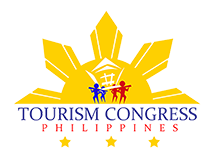
Tourism Congress of the Philippines
The Voice of Philippine Tourism Indusstry
What is TCP?
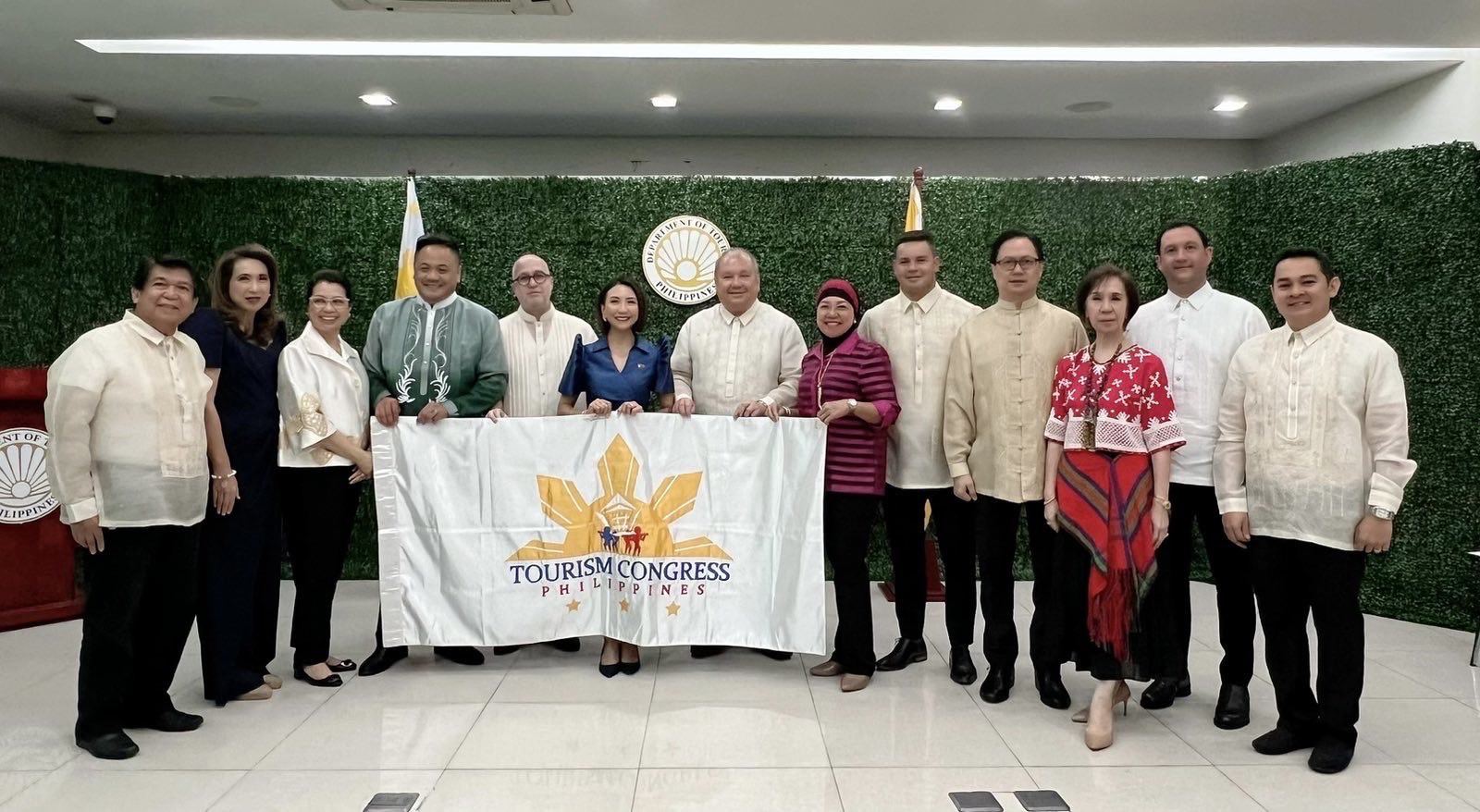
Tourism Congress of the Philippines is the leading voice of the Philippine Tourism Industry. Created under RA 9593 or the New Tourism Law, TCP aims to grow further the tourism industry of the Philippines.
TCP is the private sector consultative body which assists the government in the development and implementation of Tourism policies.
Serving as the voice of the Tourism Industry on matters of national interest, particularly those affecting the private sector, the TCP is composed of representatives of tourism enterprises all over the country, including former Secretaries of Tourism.
It is also responsible for developing a strong and institutionalized partnership between the government, through the Department of Tourism, and the private sector.
Owners and officers of Tourism enterprises all over the country are encouraged to join the TCP and get involved, through established channels, in the formulation and development of strategies that will ensure sustainability of the Tourism Industry.
Board of Officers and Trustees
- Roberto Z. Zozobrado – President (Executive Director, Lyceum of the Philippines University)
- Alan James M. Montenegro – Executive Vice President (Country Manager, Chroma Hospitality)
- Rolando Canizal – VP for Luzon (Executive Director, Tourism Knowledge Center, Rajah Travel Corporation)
- Peter K. Tay – VP for Visayas (Managing Director, Boracay Adventures, Inc.)
- Marilou W. Ampuan – VP for Mindanao (Proprietor, Bloomers Travel and Tours)
- Cindy Marie K. Verar – Secretary (Director of Sales and Marketing, Marcian Garden Hotel Corporation)
- Margarita F. Munsayac – Treasurer (VP for Sales and Marketing, Bluewater Maribago Beach Resort)
- Harry D. Morris – Public Relations Officer (Manager for Environment Sustainability, Hijo Resources Corporation)
- Michael Jaey C. Albaña – Trustee (Vice President – General Manager, SMX Convention Center)
- Javier D. Hernandez – Trustee (President, LIO Tourism Estate)
- Maria Theresa P. Acelo – Trustee (Operations Manager, Check Cars Transport System)
- Celso “Toots” B. Jimenez, Jr. – Trustee (Proprietor / Managing Officer, Micro Soph Events Management Services)
- Eduard Lawrence J. Loop – Trustee (Vice President and COO, Cebu Safari Adventure Park)
- Jaime J. Sarte III – Trustee (Director & Owner, Feel Deep Scuba Diving Services)
- Mary Ann M. Montemayor – Trustee (President, KONKORDANS Destination Management Co.)
- Clyde F. Gamolo – Trustee (Dean, College of Management & Accountancy, PHINMA Cagayan de Oro College)
What is Department of Tourism? A Comprehensive Overview

- Share on Facebook
- Share on LinkedIn
- Share on Pinterest
- Share on WhatsApp
The Department of Tourism (DOT) functions as the executive department of the Philippine government, with a critical responsibility for regulating the nation’s tourism industry.
Its primary objective is to promote the Philippines as an appealing and captivating tourist destination on the global stage.
Serving as the primary planning, implementing, and regulatory government agency , the Department of Tourism (DOT) is specifically entrusted with the development and promotion of the Philippine tourism industry, encompassing both domestic and international initiatives.
DOT Job Opportunities:
Discover rewarding career opportunities within the Department of Tourism. Explore diverse roles that contribute to the growth and promotion of the Philippine tourism industry.
Check out the current job openings listed below or explore more opportunities across various government agencies.
Note: Click on the job title to access detailed job descriptions and find instructions on how to apply. Your journey to a fulfilling career in tourism awaits!
Department of Tourism History:

In 1950, the private initiative known as the Philippine Tourist & Travel Association was established with the aim of promoting the Philippines as a key travel destination.
In 1956, the Board of Travel and Tourist Industry was formed by Congress. Following the Integrated Reorganization Plan in 1972, enacted through Presidential Decree No. 2, the Department of Trade and Tourism was founded, reorganizing the existing Department of Commerce and Industry.
As part of this reorganization, the Philippine Tourism Commission was established under the unified Trade and Tourism Department to oversee the development of the tourism industry for economic benefit.
In 1973, President Ferdinand Marcos elevated the status of tourism by creating a separate cabinet-level Department of Tourism (DOT), dividing it from the Department of Trade and Tourism.
Within the newly formed Department of Tourism, the Philippine Tourism Authority (PTA) and the Philippine Convention Bureau (PCB) were established.
The Department of Tourism was later renamed the Ministry of Tourism in line with the government’s shift to a new form of governance according to the 1973 Constitution.
In 1986, under Executive Order Nos. 120 and 120-A signed by President Corazon Aquino, the Department of Tourism underwent reorganization.
The Convention Bureau was rebranded as the Philippine Convention and Visitors Corporation, and the Intramuros Administration, previously under the defunct Ministry of Human Settlements, was attached.
The culmination of the country’s centennial celebration of independence from the Spanish Empire in 1898 saw the Department of Tourism playing a significant role in 1998.
Initiating a successful tourism promotion project, WOW Philippines, in 2003 under Secretary Richard J. Gordon marked a milestone for the Department of Tourism.
The most recent advancements in the Philippine tourism industry occurred with the passage of Republic Act No. 9593, known as the ‘Tourism Act of 2009.
“The Department of Tourism (DOT) shall be the primary government agency charged with the responsibility to encourage, promote, and develop tourism as a major socio-economic activity to generate foreign currency and employment and to spread the benefits of tourism to both the private and public sector.”
“To develop a globally competitive, environmentally sustainable and socially responsible tourism industry that promotes inclusive growth through employment generation and equitable distribution of income thereby contributing to building a foundation for a high trusted society.”
Organization Structure of the Department of Tourism (DOT)
The Department of Tourism (DOT) plays a pivotal role in shaping and promoting the Philippine tourism landscape.
The department is headed by the Secretary of Tourism (Philippines), overseeing a hierarchical structure with key leadership positions.
The leadership team includes four undersecretaries and assistant secretaries, each entrusted with specific portfolios.
Undersecretaries:
1. Undersecretary for Administration and Finance
2. Undersecretary for Public Affairs, Communications & Special Projects
3. Undersecretary for Tourism Development Planning
4. Undersecretary for Tourism Promotions
5. Undersecretary for Tourism Regulation Coordination & Resource Generations
Assistant Secretaries:
1. Assistant Secretary for Administration and Special Concerns
2. Assistant Secretary for Public Affairs, Communications and Special Projects
3. Assistant Secretary for Product and Market Development
4. Assistant Secretary for Tourism Regulation Coordination & Resource Generation for Metro Manila Cluster
5. Assistant Secretary for Tourism Regulation Coordination & Resource Generation for Luzon and Visayas
Bureaus and Offices of the Department of Tourism (DOT):
The Department of Tourism (DOT) operates seamlessly through a well-structured framework comprising various bureaus and offices.
Each entity within the department plays a unique and crucial role in fulfilling its mission to promote and develop the Philippine tourism industry.
Below is an overview of the specialized Bureaus and Offices that collectively contribute to the dynamic operations of the Department of Tourism.
- Bureau of Domestic Tourism Promotions and Information
- Bureau of International Tourism Promotions
- Office of Product Development
- Office of Tourism Coordination
- Office of Tourism Development Planning
- Office of Tourism Information
- Office of Tourism Standards
Agencies of the Department of Tourism (DOT)
Meet the members of the “Department of Tourism Family” – a group of agencies attached to the Department of Tourism (DOT) that work hand in hand to enhance and promote Philippine tourism.
Each agency has a unique role in contributing to the overall success of the Department of Tourism mission.
- Tourism Promotions Board (TPB)
- Intramuros Administration (IA)
- National Parks Development Committee (NPDC)
- Tourism Infrastructure and Enterprise Zone Authority (TIEZA), formerly Philippine Tourism Authority (PTA)
- Duty-Free Philippines Corporation (DFPC)
- Nayong Pilipino Foundation (NPF)
- Philippine Retirement Authority (PRA)
- Philippine Commission on Sports Scuba Diving (PCSSD)
These agencies make up the “DOT Family,” working together under the supervision of the Secretary to coordinate programs and policies for the betterment of Philippine tourism.
Conclusion:
In conclusion, the Department of Tourism (DOT) stands as the driving force behind the promotion and development of the Philippine tourism industry.
With a rich history and a commitment to excellence, the DOT plays a pivotal role in showcasing the beauty and allure of the Philippines on the global stage.
The structured organization, highlighted by the Secretary of Tourism and a dedicated team of undersecretaries and assistant secretaries, ensures effective leadership and strategic planning.
The historical journey, marked by significant milestones such as the creation of the Department of Tourism in 1973 and the impactful WOW Philippines campaign in 2003, reflects the department’s dedication to elevating the tourism sector.
The organizational structure, featuring specialized bureaus and offices, underscores the DOT’s comprehensive approach to promoting and regulating the tourism industry.
Each entity within the department plays a crucial role in achieving the overarching mission, contributing to the dynamic operations that define the Department of Tourism.
As the DOT continues to evolve and adapt to the changing landscape of the tourism industry, it remains a beacon for those seeking fulfilling careers and for travelers eager to experience the unparalleled beauty and hospitality of the Philippines.
The future holds exciting possibilities for the DOT, as it continues to shape the narrative of Philippine tourism on both domestic and international fronts.
Frequently Asked Questions (FAQs)
- What is the Department of Tourism (DOT)?
The Department of Tourism (DOT) is the executive department of the Philippine government responsible for regulating and promoting the nation’s tourism industry.
Its primary goal is to showcase the Philippines as an attractive and captivating tourist destination globally.
- What are the main functions of the DOT?
The DOT serves as the primary planning, implementing, and regulatory agency for the development and promotion of the Philippine tourism industry, encompassing both domestic and international initiatives.
- How can I explore job opportunities within the Department of Tourism?
Discover fulfilling career opportunities within the DOT by checking the current job openings listed on above.
Explore diverse roles contributing to the growth and promotion of the Philippine tourism industry.
- What is the history of the Department of Tourism?
The DOT’s roots trace back to 1950 with the establishment of the Philippine Tourist & Travel Association.
Over the years, it underwent several reorganizations, leading to its current status as a vital department focused on tourism development.
- What is the mission of the DOT?
The mission of the DOT is to encourage, promote, and develop tourism as a major socio-economic activity, generating foreign currency and employment while spreading the benefits of tourism to both the private and public sectors.
- What is the vision of the DOT?
The vision of the DOT is to develop a globally competitive, environmentally sustainable, and socially responsible tourism industry that promotes inclusive growth through employment generation and equitable distribution of income.
- Can you explain the organization structure of the DOT?
The DOT is headed by the Secretary of Tourism, supported by undersecretaries and assistant secretaries overseeing specific portfolios.
The department operates through various bureaus and offices, each playing a unique role in promoting and developing Philippine tourism.
- What are the key bureaus and offices within the DOT?
The DOT operates through bureaus such as Domestic Tourism Promotions and Information, International Tourism Promotions, and various offices including Product Development, Tourism Coordination, Tourism Development Planning, Tourism Information, and Tourism Standards.
- Which agencies are part of the “DOT Family”?
The “DOT Family” includes agencies attached to the DOT, such as the Tourism Promotions Board (TPB), Intramuros Administration (IA), National Parks Development Committee (NPDC), Tourism Infrastructure and Enterprise Zone Authority (TIEZA), Duty-Free Philippines Corporation (DFPC), Nayong Pilipino Foundation (NPF), Philippine Retirement Authority (PRA), and Philippine Commission on Sports Scuba Diving (PCSSD).
Each agency plays a unique role in enhancing and promoting Philippine tourism.
- How has the Department of Tourism evolved over the years?
The Department of Tourism has undergone significant evolution since its inception in 1950.
It started as a private initiative, and through legislative changes and reorganizations, it became a separate cabinet-level department focused on promoting and developing the Philippine tourism industry.
Disclaimer:
The Philippine Go does not collect fees and is not a hiring agency, nor is it related to any hiring agency for employment abroad. All information contained here is solely for informational purposes and rightfully belongs to its rightful owner. Attached in the last section of the content are references for further verification, if needed. Read more
- Department of Tourism (Philippines) Wikipedia. (n.d.). Retrieved from [ https://en.wikipedia.org/wiki/Department_of_Tourism_(Philippines) ]
More reasons to ‘Love the Philippines’
In celebration of manila bulletin’s 124th anniversary theme of ‘newsmakers of the year,’ we look back at tourism accolades bestowed upon the philippines in 2023, as led by the department of tourism.

2023 proved to be a remarkable year for Philippine tourism, surpassing the target international visitor arrivals and reaching the five-million mark before year-end. Under the leadership of the Department of Tourism, the country earned numerous accolades from prestigious travel institutions, including the World Travel Awards 2023 (WTA) held at Burj Al Arab in Dubai, UAE, in December.
The Philippines was honored with the inaugural Global Tourism Resilience Award, acknowledging the country's demonstration of “global leadership, pioneering vision, and innovation to overcome critical challenges and adversity.” Being one of just five countries acknowledged for this award, the Philippines sets the standard for best practices in tourism resilience.
In addition to this significant recognition, the Philippines was once again honored as the World's Leading Dive Destination, World's Leading Beach Destination, and World's Leading City Destination for Manila City.

Tourism Secretary Christina Garcia Frasco expressed joy over these accolades, stating, “We are elated and grateful that Philippine tourism continues to soar to global prominence with tourists declaring their love for the Philippines as the undisputed World’s Leading Beach Destination and World’s Leading Dive Destination, and now World’s Leading City Destination, Manila.”
Frasco continued, “Receiving the Global Tourism Resilience Award is also especially meaningful as this is an affirmation of all the hard work done in the past year to strengthen the pillars of tourism development through convergence and collaboration toward the tourism transformation envisioned by our President Ferdinand Marcos, Jr. These accolades are as much a source of Filipino pride as they are a testament to the enormous contribution of tourism to the Philippine economy and global standing.”

“With these remarkable triumphs, the Philippines reinforces its position as an unparalleled destination, inviting travelers to explore our captivating shores, vibrant underwater realms, and dynamic urban landscapes as they immerse in our culture and heritage, and create unforgettable memories with the distinct grace and hospitality of the Filipino people. We express our profound gratitude to all who have contributed to this success and we continue to dedicate our wholehearted support to all our tourism stakeholders,” the tourism chief added.
Condé Nast Traveler Top Readers’ Choice Awards cited Boracay as the third top island destination in Asia, while Palawan, and Siargao ranked sixth and tenth, respectively. Meanwhile, TripZilla, the prominent digital travel company in Southeast Asia, bestowed the Destination of the Year Award upon the Philippines, recognizing the country not only for its popular tourist destinations but also for its hidden gems and under-the-radar spots. Also, the Sustainability Leader of the Year for Asia title was given to the Tourism Promotions Board (TPB), an agency affiliated with the DOT entrusted with marketing and promotions.
Philippine Tourism Authority
The Philippine Tourism Authority ( Filipino : Pangasiwaang Pilipino sa Turismo ), abbreviated as PTA , is an agency of the Philippine government under the Department of Tourism responsible for implementing policies and programs of the department pertaining to the development, promotion, and supervision of tourism projects in the Philippines .
Republic Act No. 9593 or “The Tourism Act of 2009” declares a national policy for tourism as an engine of investment, employment, growth and national development, and strengthening the Department of Tourism and its attached agencies to effectively and efficiently implement that policy, and appropriating fund thereof.The Act supports the establishment of Tourism Enterprise Zones (TEZs) which will contribute to the accelerated creation of employment opportunities by encouraging and supporting investments in the development and operation of these zones.
These TEZs will be the centers of tourism development in the country and are created with the objective of providing the necessary vehicle to coordinate actions of the public and private sectors to address development barriers, attract and focus investment on specific geographical areas and upgrade product and service quality.
The Tourism Infrastructure and Enterprise Zone Authority or TIEZA (formerly Philippine Tourism Authority), an attached agency to the Department of Tourism, is mandated to designate, regulate and supervise the TEZs established under this Act, as well as develop, manage and supervise tourism infrastructure projects in the country. It shall supervise and regulate the cultural, economic and environmentally sustainable development of TEZs toward the primary objective of encouraging investments therein.
The TIEZA is governed and its powers exercised by a Board of Directors (TIEZA Board) composed of The Department Secretary, The TIEZA Chief Operating Officer, The Tourism Promotion Board Chief Operating Officer, the Department of Public Work and Highways Secretary, the Department of Environmental and Natural Resources Secretary, the Department of Internal and Local Government Secretary, and five (5) representative directors that will be recommended by the Tourism Congress.
It is mandated by the DOT as:
•To designate, regulate, and supervise tourism enterprise zones established under R.A. 9593
•To develop, manage and supervise tourism infrastructure projects nationwide
•To provide technical and financial assistance to qualified tourism projects, investors and proponents (both government and private)
•To generate revenues to fund both national and corporate developmental needs and/or undertakings
•To exercise PTA functions under P.D. 564
The TIEZA is envisioned to be the recognized leader and authority in tourism development at par with international standards, responsive to cultural, environmental and social concerns that will generate investments, foreign exchange and employment to mold an enhanced sense of national pride for all Filipinos.
Committed to support the establishment of cultural, economic and environmentally sustainable TEZs; to attract investments on tourism development undertakings through effective management of TEZs, effective service delivery, and to continue to pioneer, develop and improve tourism destination through a more expansive private sector participation and aggressive pursuit of tourism infrastructure development.
TIEZA has been committed to its corporate thrusts for CY 11. Those are:
•Establish the necessary groundwork for the smooth transition of PTA into TIEZA based on the approved reorganization plan and in accordance with the organization’s new mandates as provided for in R.A. 9593;
•Promote local and foreign investments in tourism through the Tourism Enterprise Zones; and pursue projects and programs to make the Philippines as one of the top tourist destinations in the Asia-Pacific region;
•Harness and develop potential tourist destinations to spur socio-economic development, particularly in less developed regions, through tourism-related infrastructure projects;
•Encourage the local government units and the private sector participation in the formulation and implementation of tourism sustainable projects and programs;
•Intensify efforts to project TIEZA image as an effective developer of tourism destinations;
•Strengthen the organization’s information and communication technology systems for operational efficiency; and
•Further enhance the organization’s human resources through special trainings and scholarship programs.
As the infrastructure arm of DOT, TIEZA has been managing and operating several establishment. Among those operational are:
- Banaue Hotel and Youth Hostel
- Hilaga Northern Philippines
- Club Intramuros Golf Course
- Rizal Lights and Sounds Museum
- Balicasag Island Dive Resort
- Gardens of Malasag Mountain Resort
- Zamboanga Golf Course and Beach Park
To date, TIEZA is headed by Mark Tadeo Lapid , a former Pampanga governor and son of Senator Manuel Lapid . The ex-solon took his oath before then DOT Secretary Joseph Ace H. Durano on June 6, 2008 as Acting General Manager with former local elections running-mate and son of a business mogul in their native Pampanga, Paul Tristan Laus as his Chief-of-Staff. To provide assistance in handling documentary works, Abigail Falguera was hired as Lapid's Secretary who resigned in June 2011 for personal reasons after rendering nearly 3 years of government servic
On November 2010, Lapid sworn into office as Chief Executive Officer of TIEZA with the Laus as his Technical Assistant and Falguera as Secretary. Lawyer Joy M. Bulauitan, former Deputy General Manager for Administration has been named Assistant Chief Operating Officer for Tourism Enterprise Zones.
- Department of Tourism (Philippines)
External links
- TIEZA homepage
Navigation menu
Personal tools.
- Request account
- View source
- View history
- Recent changes
- Random page
- Infogalactic News
- Buy an account
- What links here
- Related changes
- Special pages
- Printable version
- Permanent link
- Page information
- Cite this page
- This page was last modified on 27 January 2015, at 08:53.
- Content is available under Creative Commons Attribution-ShareAlike License unless otherwise noted.
- This article's content derived from Wikipedia, the Free Encyclopedia ( See original source ).
- Privacy policy
- About Infogalactic: the planetary knowledge core
- Disclaimers
- Mobile view
- Toggle Accessibility Statement
- Skip to Main Content


IMAGES
COMMENTS
Tourism in the Philippines. Palawan, which includes Coron, is a UNESCO Biosphere Reserve. Tourism is an important sector for the Philippine economy. The travel and tourism industry contributed 6.2% to the country's GDP in 2022; [1] this was lower than the 12.7% recorded in 2019 prior to the COVID-19 lockdowns. [2]
Best Time to Go to the Philippines. The Philippines has two distinct seasons, wet and dry. The dry season starts from November until June. These months are considered the best time to travel to most destinations in the Philippines. The wet season, on the other hand, is from July to October.
The Philippines offers a wide variety of tourism, including eco-tourism, cultural and historical tourism, adventure tourism, food tourism, religious tourism, and health and wellness tourism, each providing unique and immersive experiences. Unique Aspects of Philippine Tourism The Philippines, with its stunning natural beauty and rich cultural heritage, presents a unique tourist experience ...
The Tourism Promotions Board (TPB) is a body corporate that markets and promotes the Philippines as a world-class tourism and MICE destination. Learn more about its mandate, vision, mission, and programs on its official website. Discover the beauty and diversity of the Philippines with TPB.
A Philippine Tourism Commission was created under the unified Trade and Tourism Department to oversee the growth of the tourism industry as a source of economic benefit for the country. In 1973, President Ferdinand Marcos created a new cabinet-level Department of Tourism (DOT) by splitting the Department of Trade and Tourism into two separate ...
Heritage tourism is crucial in the Philippines for economic growth, job creation, cultural preservation, educational enrichment, and sustainable community development. Significance of Cultural Heritage The cultural heritage of the Philippines holds immense significance not just for its aesthetic and historical value, but also for its role in shaping the nation's identity.
8. Kayangan Lake, Coron, Palawan. Undoubtedly one of the most photographed and iconic destinations in the Philippines is Kayangan Lake in Coron, Palawan. Going on a Kayangan Lake Coron tour will allow you to see its lagoon that is a dreamy mix of blues and greens glistening on a bright, sunny day.
1973. 1973. Established in 1973, the Department of Tourism (DOT) is the Philippines' executive office responsible for the regulation and promotion of the Philippine tourism industry. DOT's mission is to encourage, promote, and develop tourism as a major socio-economic activity to generate foreign currency and local employment, ultimately ...
18. Hanging Bridge, Sevilla. 19. Sugba Lagoon, Siargao. Best Time to Visit The Philippines. 1. White Beach, Boracay. White Beach, Boracay. There is no shortage of pristine beaches in the Philippines, but if you are looking for a more active beach scene, one of the best places to visit is White Beach in Boracay.
In light of the current COVID-19 situation, the Philippines has implemented temporary travel restrictions to contain the spread of COVID-19. We urge you to stay home and follow community quarantine protocols. Learn more.
Reinventing tourism. After almost two years of travel restrictions, the Philippines finally reopened its doors last Feb. 10 to international tourists. More than 7,000 visitors have since arrived from countries like the United States, Australia, China, and Japan as of last week—a mix of returning tourists, balikbayans, and revenge travelers.
World Heritage Sites; it's an adventure you've. always wanted to take. Beyond smiles and. casual greetings; it's friendship you. weren't expecting. to make. We're excited to share all these and more to the world.
The Tourism Infrastructure and Enterprise Zone Authority ( TIEZA ), formerly the Philippine Tourism Authority ( Filipino: Pangasiwaang Pilipino sa Turismo ), is an agency of the Philippine national government under the Department of Tourism responsible for implementing policies and programs of the department pertaining to the development ...
The PCB has been renamed the Philippine Convention and Visitors Corporation, its functions expanded to include general tourism promotion. The Intramuros Administration and the National Parks Development Committee were also attached to DOT. And in December 1991, the Ngayon Pilipino Foundation became an attached agency of the DOT.
Mission. To contribute to national tourism development goals and showcase Philippine culture by designating, supervising, and regulating sustainable Tourism Enterprise Zones; undertaking viable Tourism Infrastructure Projects; and managing assets. *On 09 December 2021, the TIEZA Board of Directors reviewed and approved the TIEZA Mission and ...
The Department of Tourism (DOT) is the primary planning, implementing, and regulatory government agency tasked to develop and promote the Philippine tourism industry, both domestic and international. The agency is also tasked to manage, operate, and maintain all government-owned tourism facilities. It is the sole owner of all Philippine tourism ...
Home - Love the Philippines! Welcome to the DOT's Corporate Site. News and Updates. Total Visitor Arrivals 2024. 1,662,491. As of April 1, 2024.
Manila, Philippines - The Department of Tourism (DOT) and the Tourism Promotions Board (TPB) Philippines launched Travel Philippines, the country's official travel companion, today, 30 October 2020. The app provides users access to the latest travel advisories and safety guidelines in various destinations that have reopened to tourism.
MANILA - The Philippines targets to become a tourism powerhouse in Asia in the next five years, Tourism Secretary Christina Frasco said Wednesday. At the unveiling of the 2023-2028 National Tourism Development Plan (NTDP) during a tourism stakeholders' summit in Manila, the Department of Tourism (DOT) vowed to "establish a Philippine ...
Tourism Congress of the Philippines is the leading voice of the Philippine Tourism Industry. Created under RA 9593 or the New Tourism Law, TCP aims to grow further the tourism industry of the Philippines. TCP is the private sector consultative body which assists the government in the development and implementation of Tourism policies.
Updated: December 6, 2023. The Department of Tourism (DOT) functions as the executive department of the Philippine government, with a critical responsibility for regulating the nation's tourism industry. Its primary objective is to promote the Philippines as an appealing and captivating tourist destination on the global stage.
About Us. The Tourism Infrastructure and Enterprise Zone Authority (TIEZA), a government corporation, was created by virtue of Republic Act No. 9593 or the Tourism Act of 2009 on May 12, 2009, replacing the Philippine Tourism Authority (PTA). TIEZA is mandated to continue the functions previously exercised by PTA under Presidential Declaration ...
In celebration of Manila Bulletin's 124th anniversary theme of 'Newsmakers of the Year,' we look back at tourism accolades bestowed upon the Philippines in 2023, as led by the Department of Tourism. May 09, 2024 ... 2023 proved to be a remarkable year for Philippine tourism, surpassing the target international visitor arrivals and ...
The Philippine Tourism Authority ( Filipino: Pangasiwaang Pilipino sa Turismo ), abbreviated as PTA, is an agency of the Philippine government under the Department of Tourism responsible for implementing policies and programs of the department pertaining to the development, promotion, and supervision of tourism projects in the Philippines.
Definition of Terms. - The following terms, as used in this Act, are defined as ... "Secretary" refers to the Secretary of Tourism; c) "Duty Free Philippines" (DFP) refers to the government agency created pursuant to Executive Order No. 46 (1986); d) "Duty Free Philippines Corporation" (DFPC) refers to the corporate created out of DFP
The Tourism Infrastructure and Enterprise Zone Authority (TIEZA), a Government Owned and Controlled Corporation (GOCC) attached to the Department of Tourism (DOT), was created by virtue of Republic Act No. 9593, otherwise known as the Tourism Act of 2009. It is responsible for implementing policies and programs of the DOT pertaining to the ...